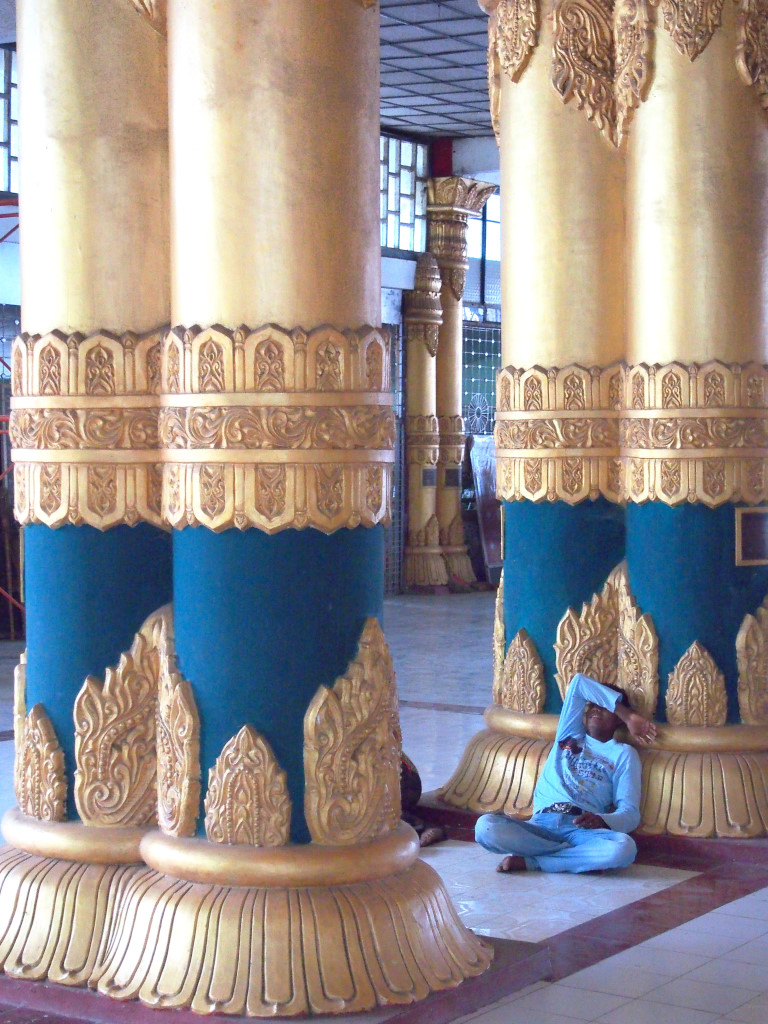April 26th, 2015
Another day is spent ambling through Sittwe, and culminating at the waterfront. Other than the stress of finding a suitable hotel here and resolving the issue with fraudulent bus ticket, the stay here will have been quite bucolic, an unusual and almost unexpected conclusion to my second Burmese sojourn.
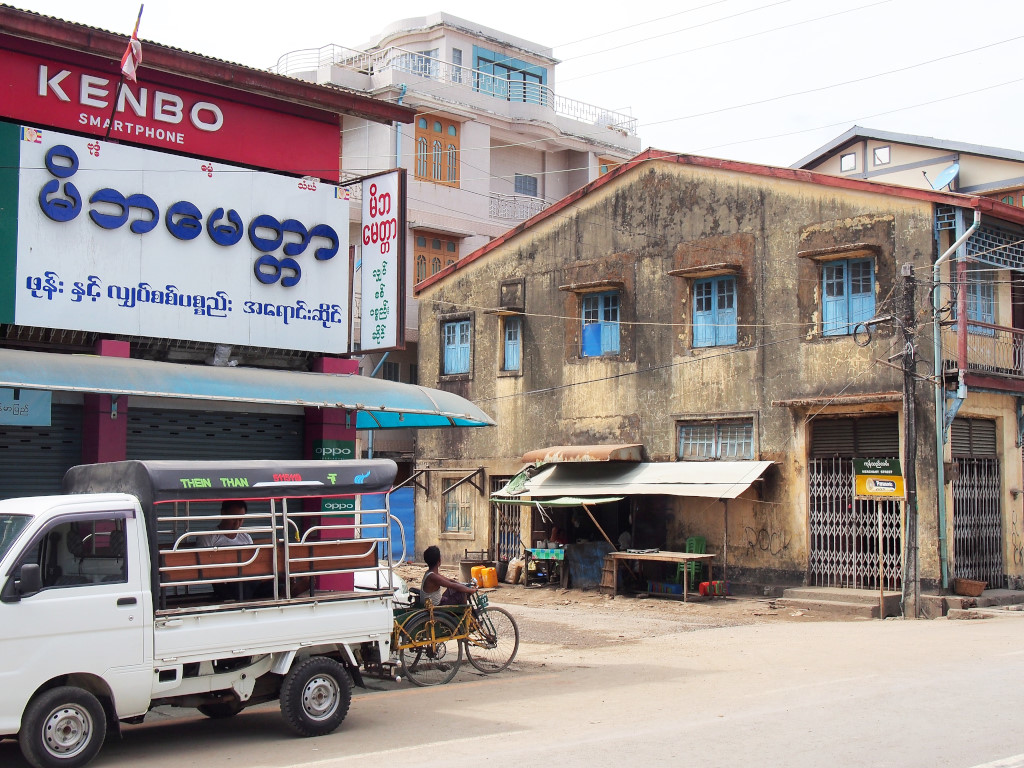
Far less bucolic is the reality of what is transpiring to the north of Rakhine state, and that may threaten to broach the highway leading eastward to central Burma and ultimately to Yangon. The current conflicts in the region foreshadow the humanitarian disaster that the region will precipitate towards within a few short years (at the time of writing).
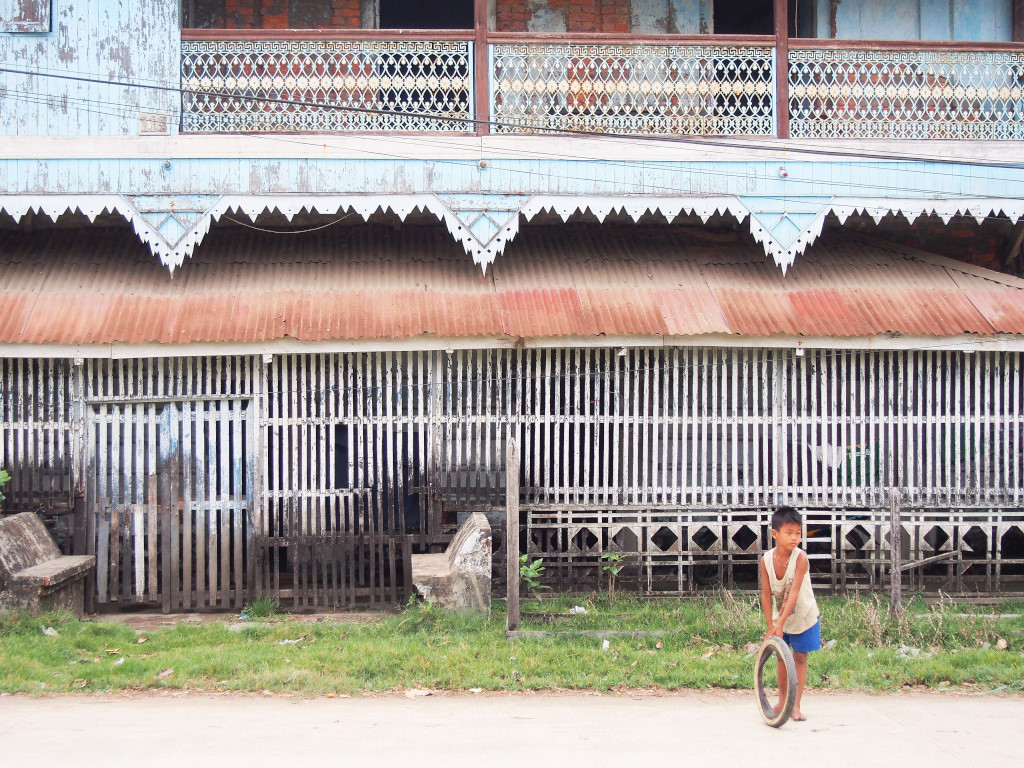
Rakhine state lies on the far western side of Myanmar, bordering with Bangladesh, and lying to the west of the Arakan mountains I crossed through en route to Mrauk U. Rakhine state is home to both Rakhine Buddhists and Rohingya Muslims. The contemporary Rohingya population is largely focused on the northern part of Rakhine state, north of the Keladan river.
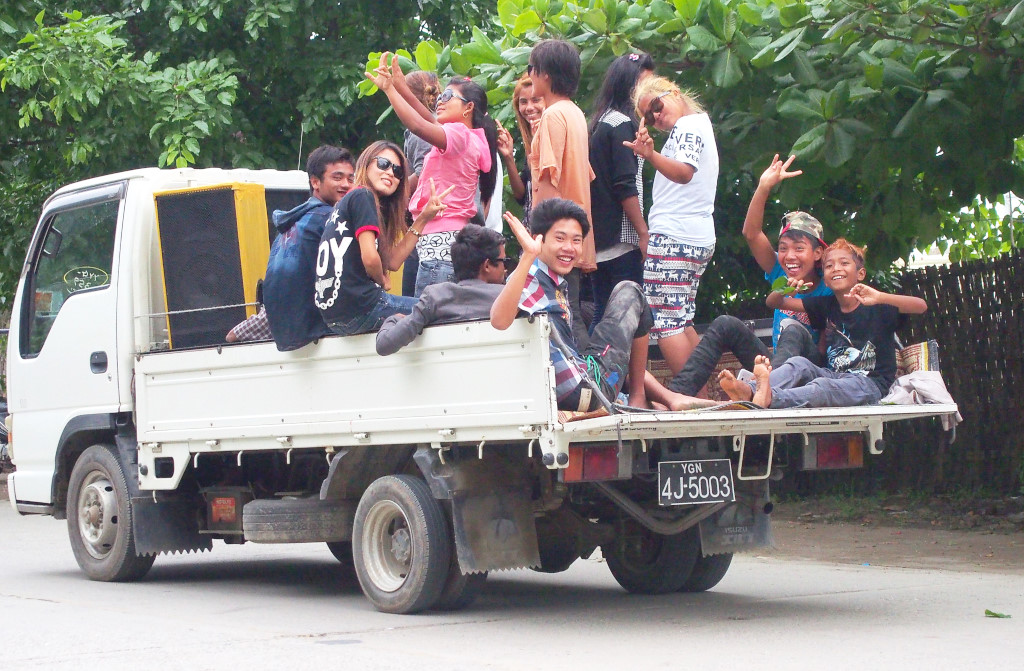
The following description paraphrased from Wikipedia attempts to explain the history of the Rohingya in the region, although arriving at any degree of clarity particularly in the more recent mayhem in the region is not an easy task.
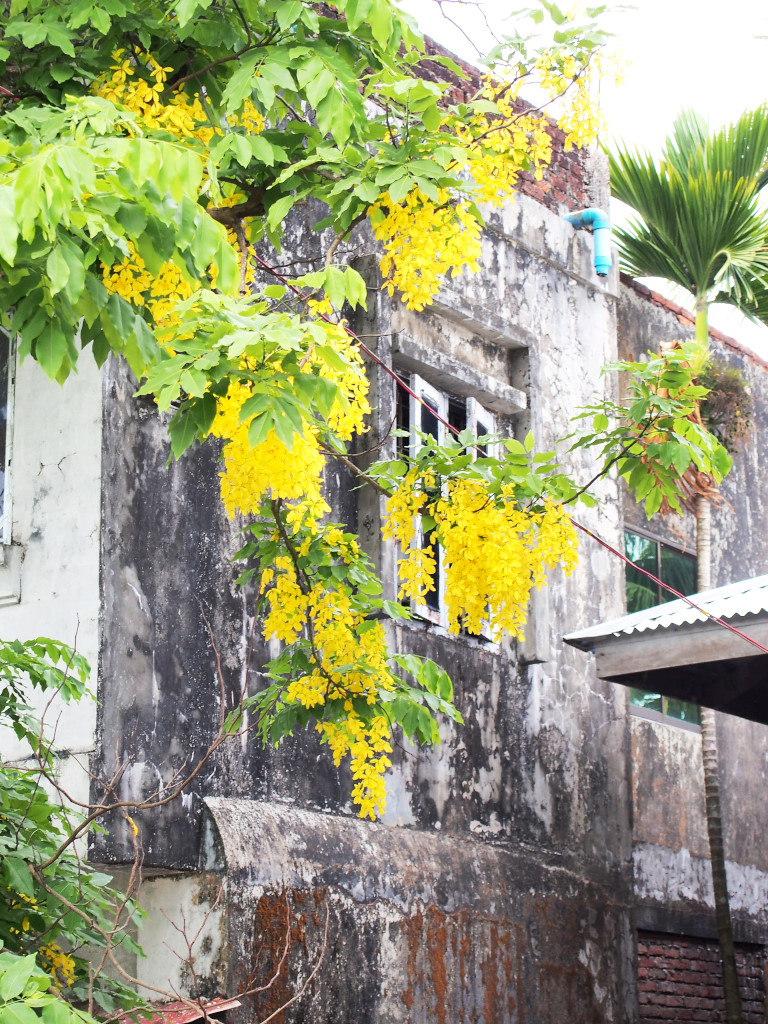
The genesis of Buddhist culture in Rakhine state dates to the Buddhist Rakhine people, who migrated from the Burmese Pyu city states around the 9th century.
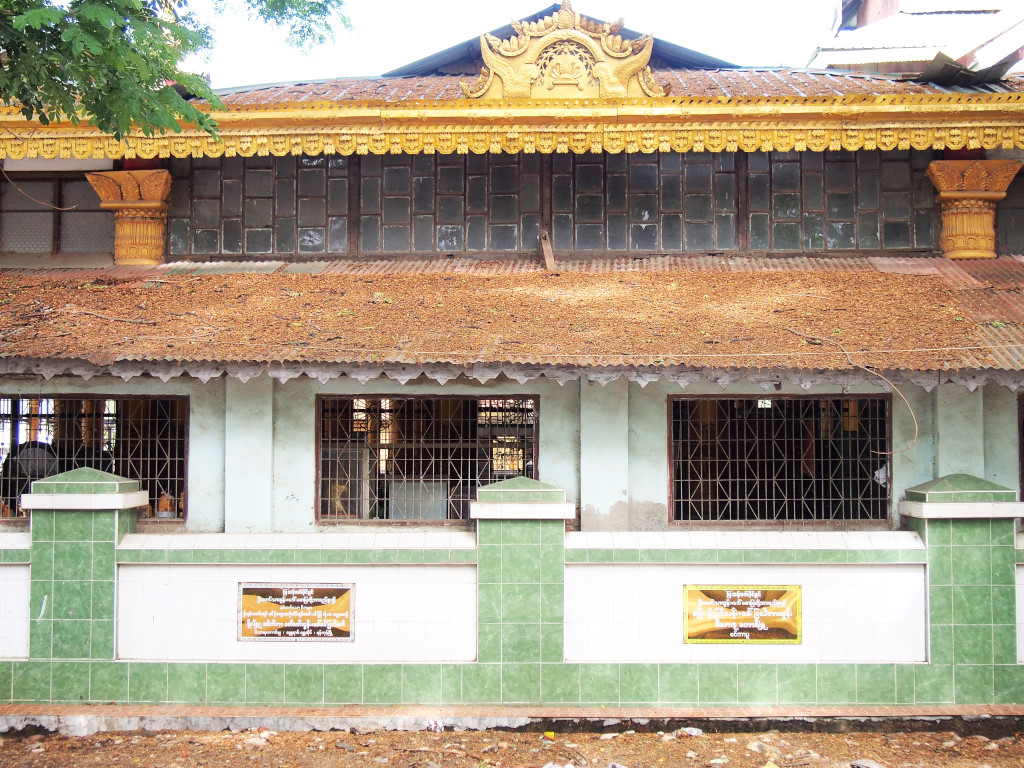
Muslims were in evidence in this border region between Southeast Asia and South Asia as early as the 8th century. The Indian underpinnings of Arakan date back to the existence of Dhanyawadi (if not earlier), between the 4th and the 6th century AD. The area was later governed by the Bengali Chandra dynasty around the 10th century AD. Islam arrived in the 8th century with Arab traders.

King Min Saw Mon reclaimed the throne of Mrauk U in the early 15th century with the assistance of the Bengal Sultanate. The Bengali who assisted in the effort formed their own settlements in the region, representing an early wave of Muslim Bengali migration into the Rakhine region.
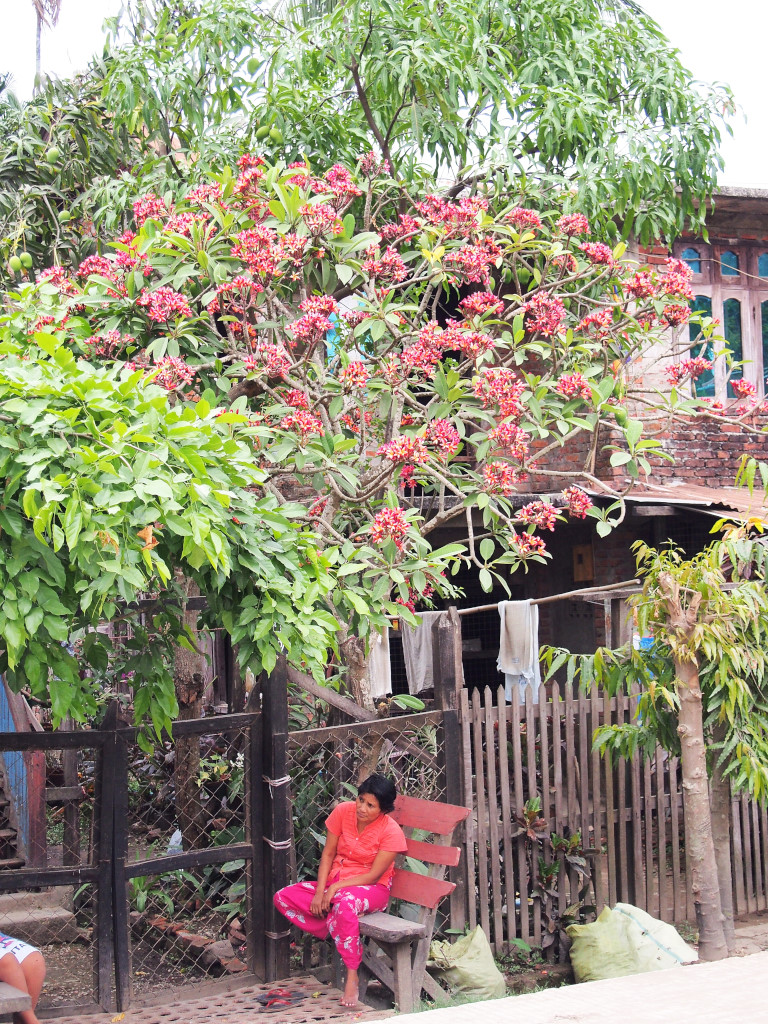
While subsequent Arakan rulers assumed a more aggressive stance to their Bengali neighbor to the west, the Islamic culture seemed to hold a certain degree of sway over Rakhine rules in later centuries.
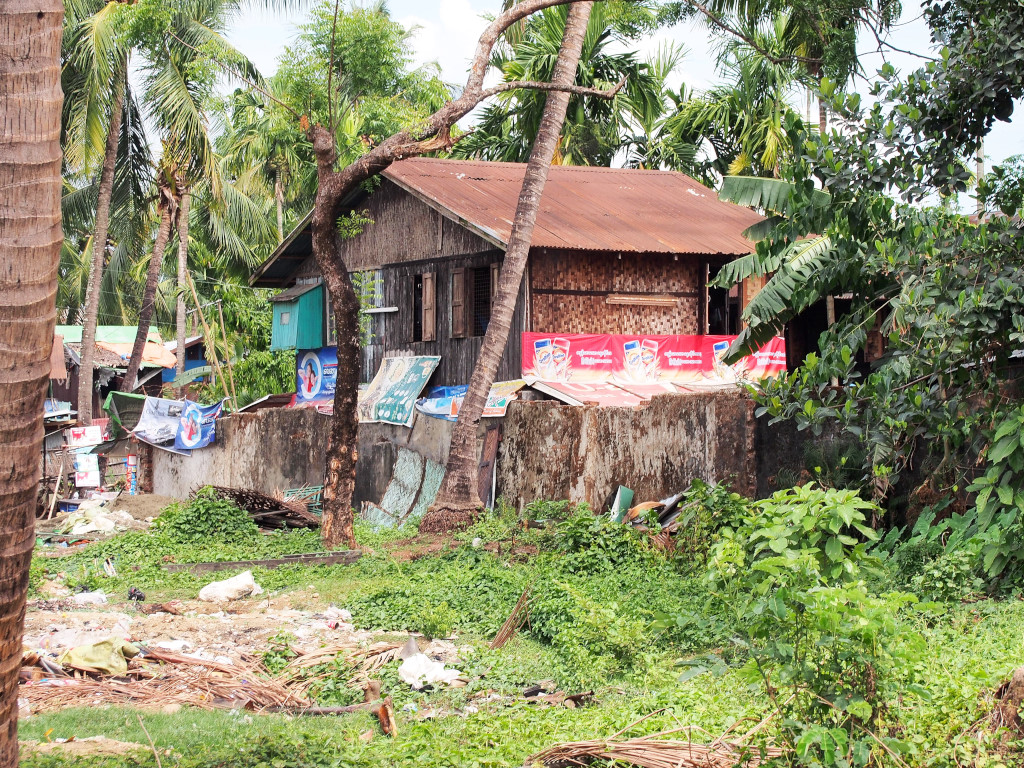
At the same time, the Bengali population was augmented by slaves imported by Arakan raiders and Portuguese.
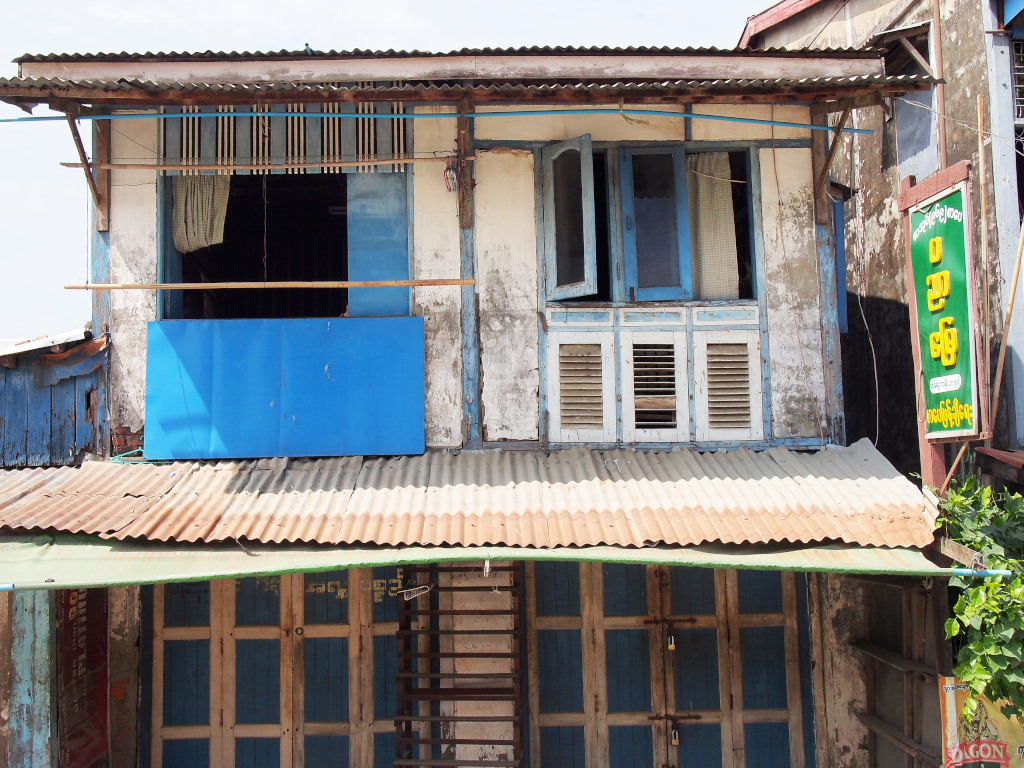
In an effort to stem Arakanese-Portuguese piracy, Indian Mughal emperor Aurangzeb had the Arakan holdings in Bengal reconquered in addition to the northern Arakan region itself, concentrating the Muslim population in that area.
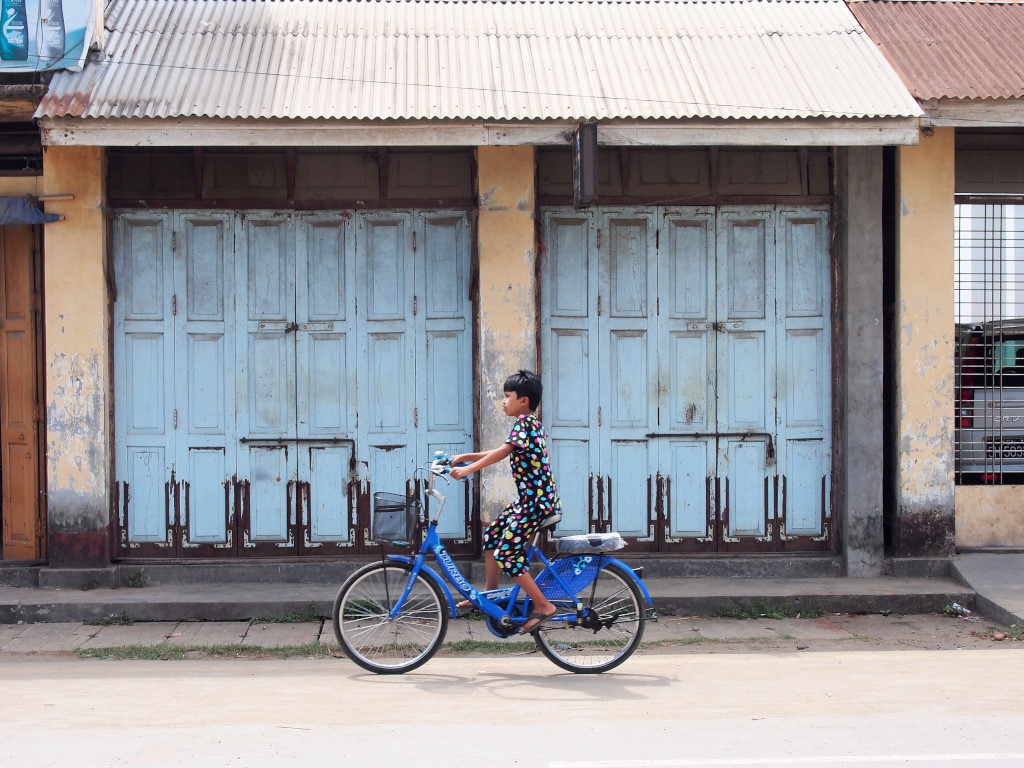
Following Burmese king Konbaung’s conquest of Arakan in 1785, a large part of the population was routed, Buddhists fleeing eastward into Burma, and the Muslim population into Bengal.
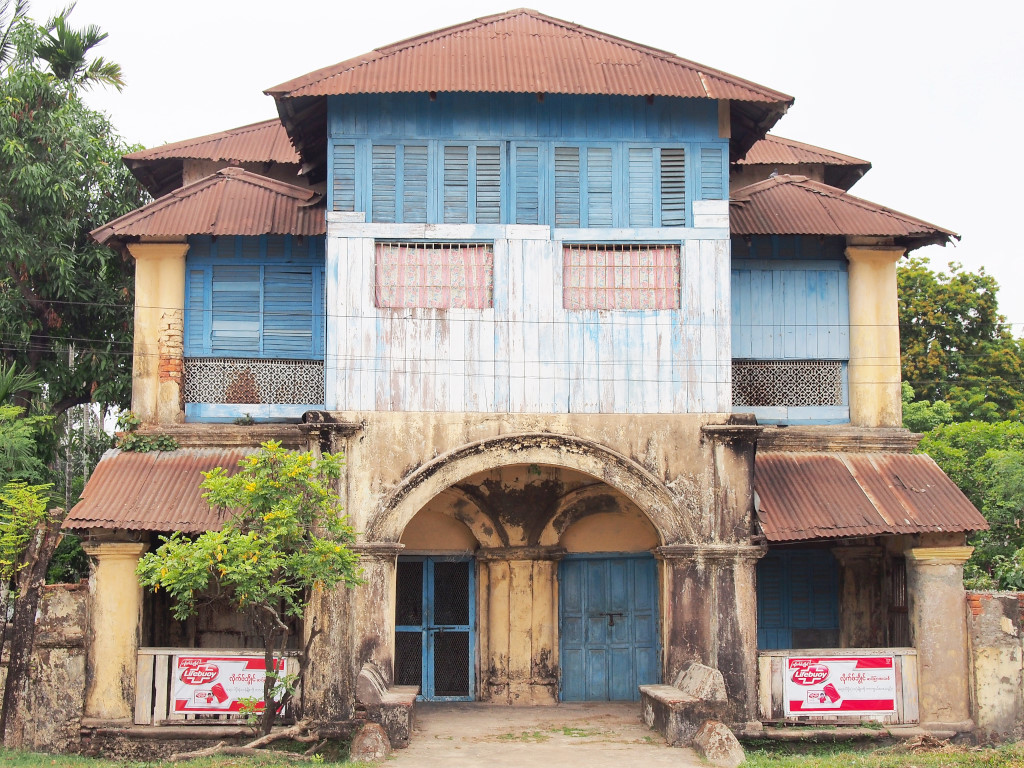
With the advent of British rule, substantial numbers of Bengalis were brought into the Arakan region as farm laborers. By the beginning of the 20th century, the area of Sittwe (formerly known as Akyab) held a population of several thousand from the Chittagong region in eastern Bengal. The area became increasingly flooded with Indians, and by 1927, immigration climaxed at half a million.
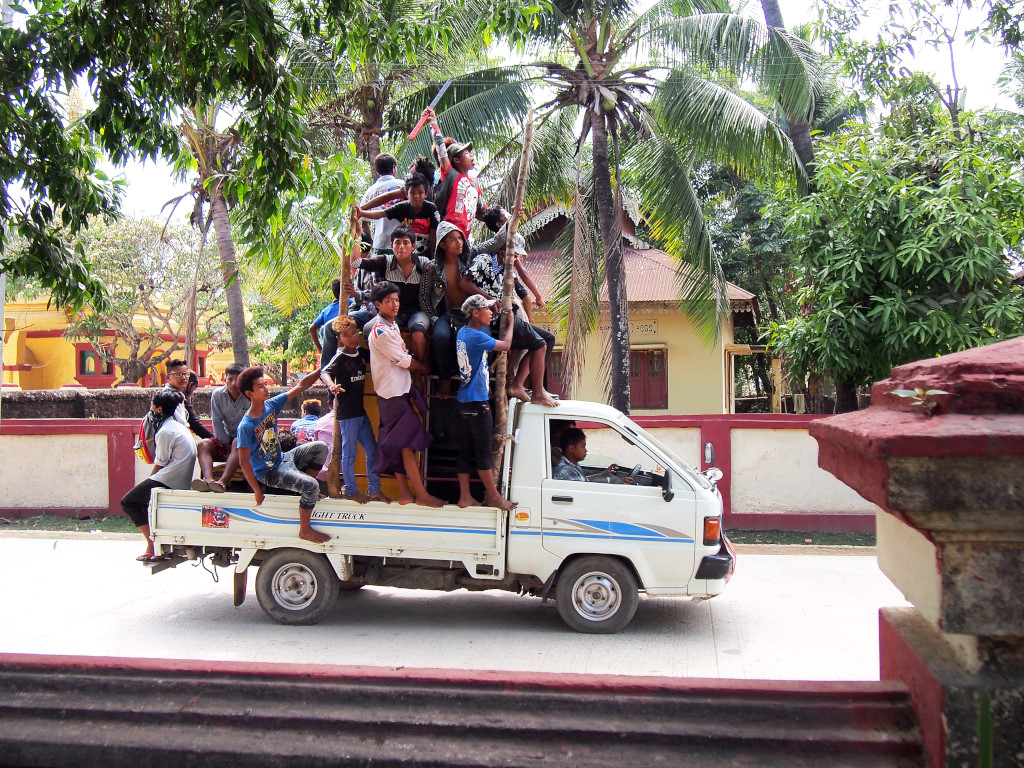
The reaction of the Burmese to this tsunami of Indian immigrants was anything but receptive, and in Rakhine state was most acute.
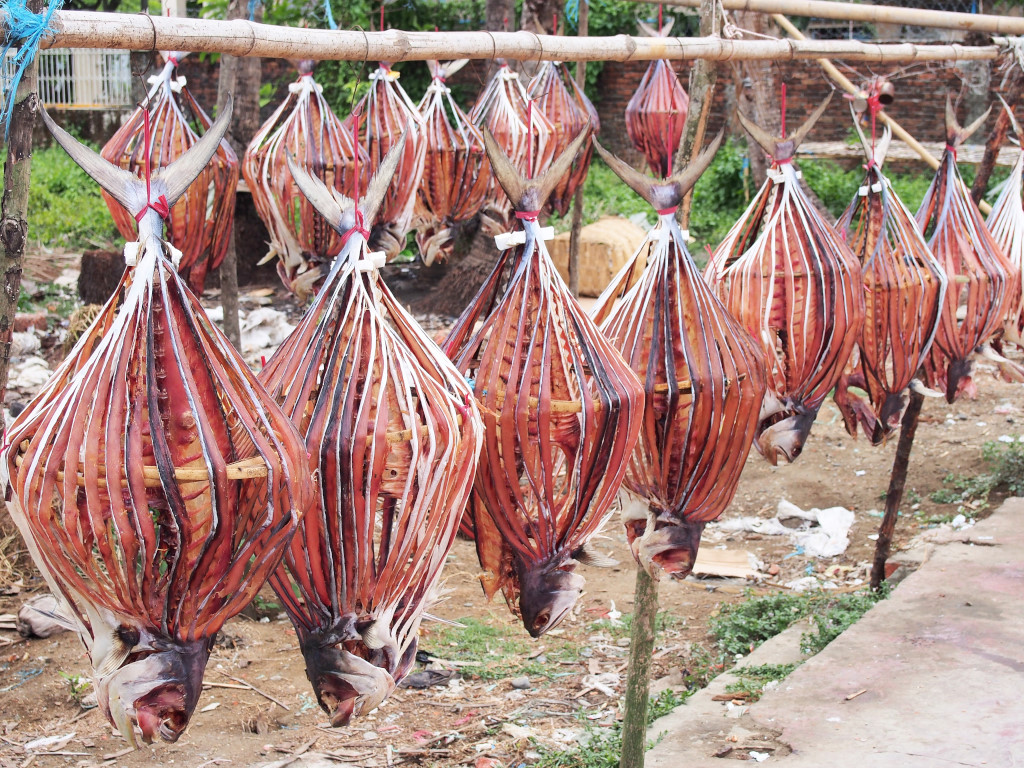
In the course of the abandonment of Rakhine state by the British during the Japanese invasion in the early 1940s, tensions between the Arakan and Rohingya reached a nadir, resulting in violent purges and substantial numbers fleeing the region. A movement to create an independent Pakistan encouraged a separatist Rohingya movement to coalesce in the 1940s as well.
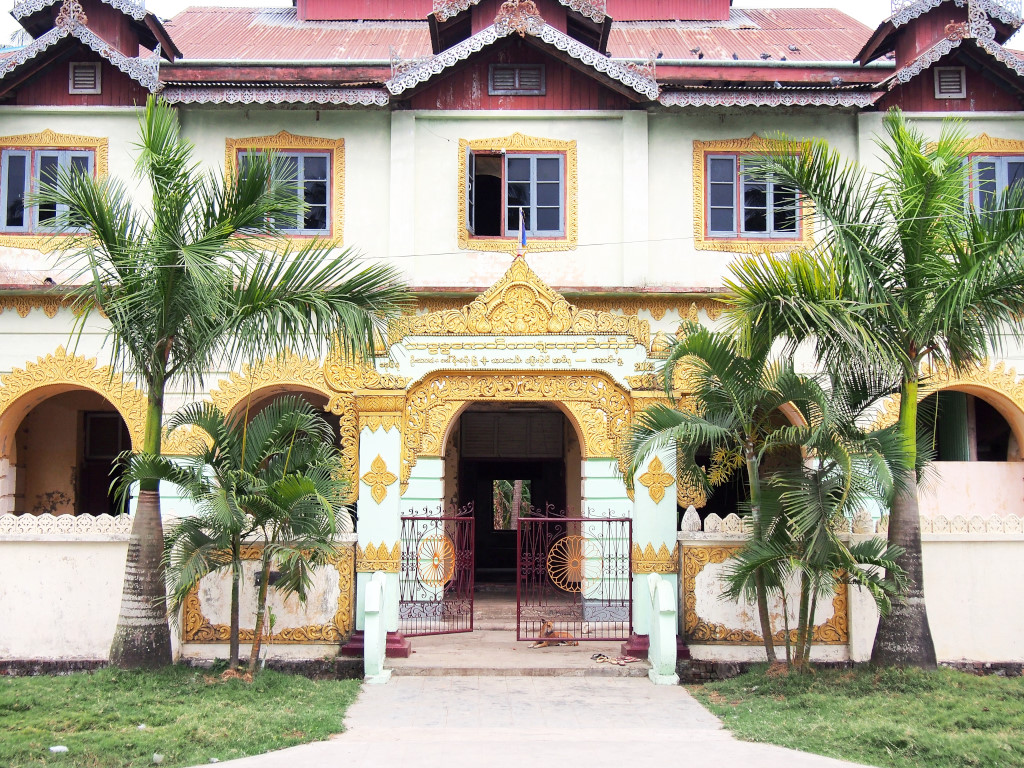
Apparently, vast numbers of Chittagonians migrated again into Rakhine state following World War II, although it is debated to what extent these were people who had fled the region during earlier times.
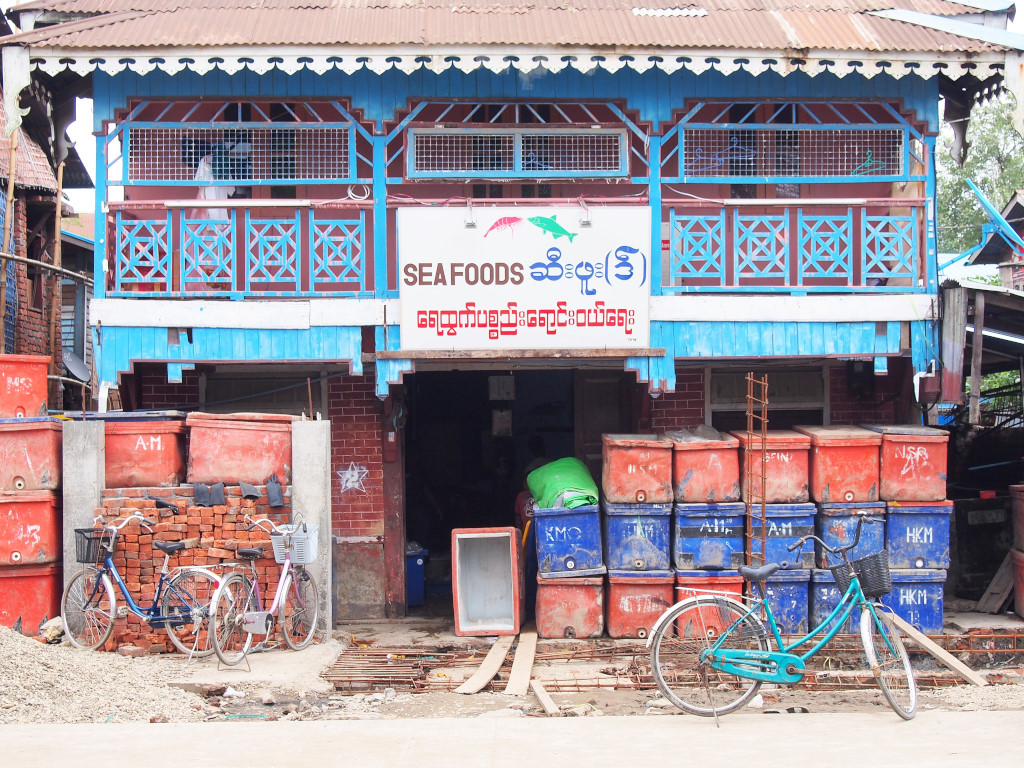
The push and pull involving the Muslim Rohingyas has continued since World War II, occasional pogroms resulting in substantial numbers fleeing, and at the same time eastern Bengalis returning into the region.

Meanwhile, the military government in Yangon began a massive purge of the Indian migrant population in Myanmar following the coup in 1962.
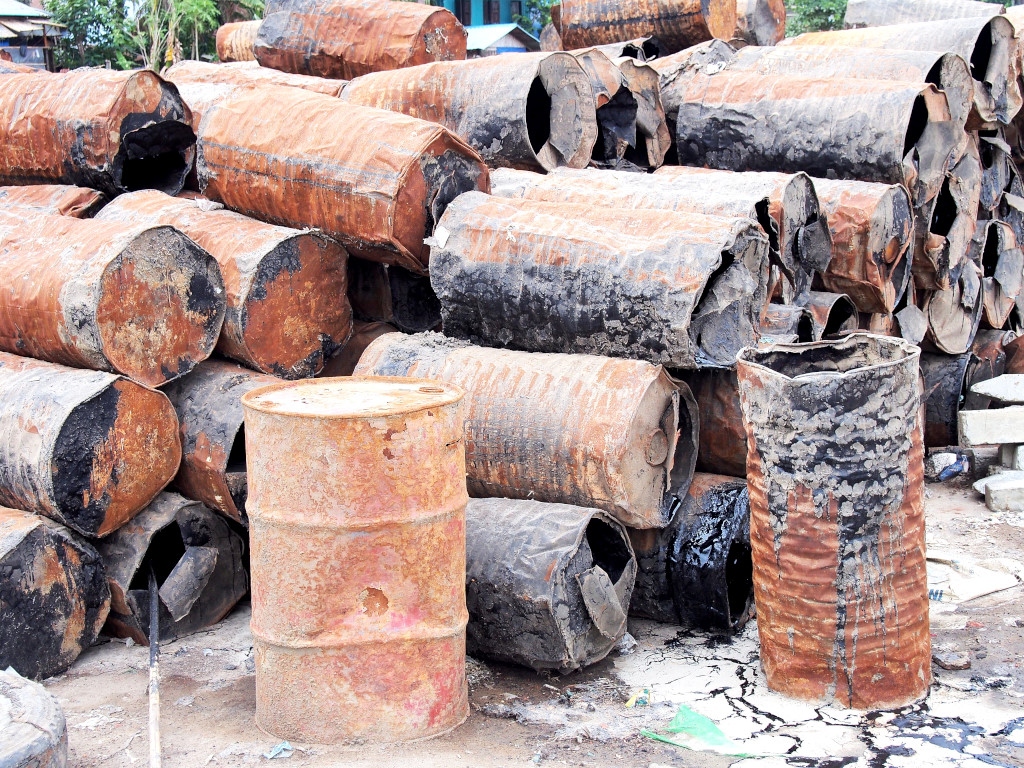
The population of Rohingya in Rakhine state was in the area of one million prior to the current crisis. Some half a million to a million have fled, either to neighboring Bangladesh or overseas, often in the most treacherous conditions. Some 100,000 are mouldering in refugee camps.
The stability and security of the Rohingya has been threatened increasingly over the last few decades with escalating conflicts arising between militant Rohingya groups and the Myanmar military.
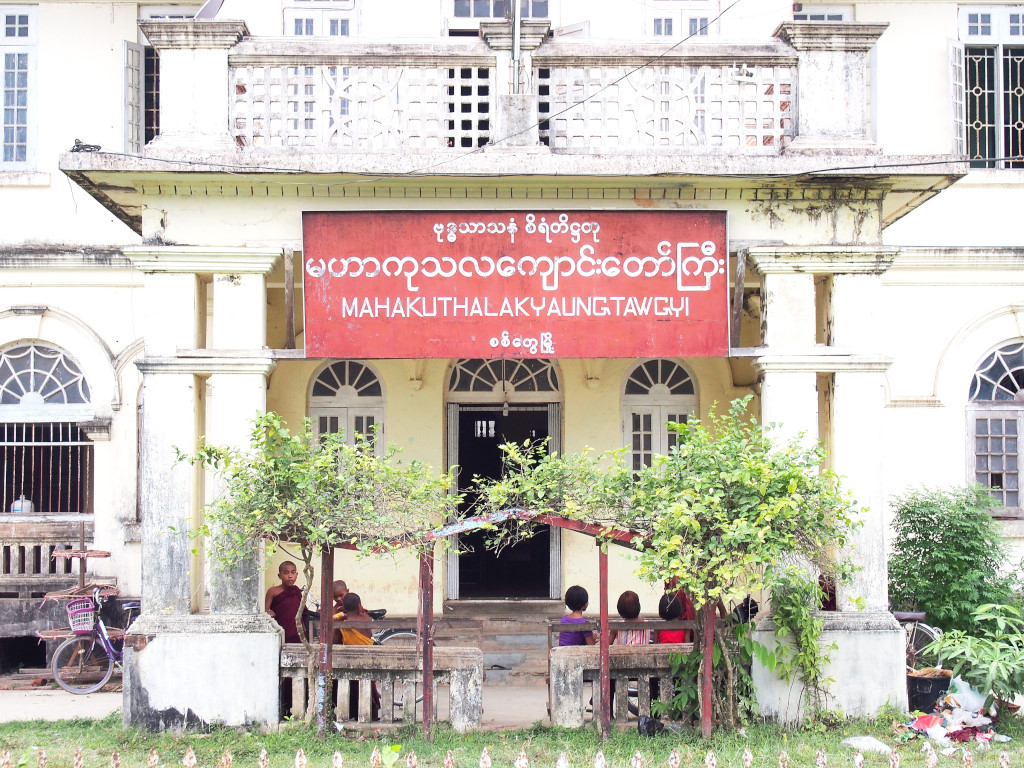
As much as the Burmese military is at fault for the brutality of the treatment of the Rohingya, the situation is also exacerbated by violent attacks from fringe Rohingya groups, whose ostensible aim is an independent state.
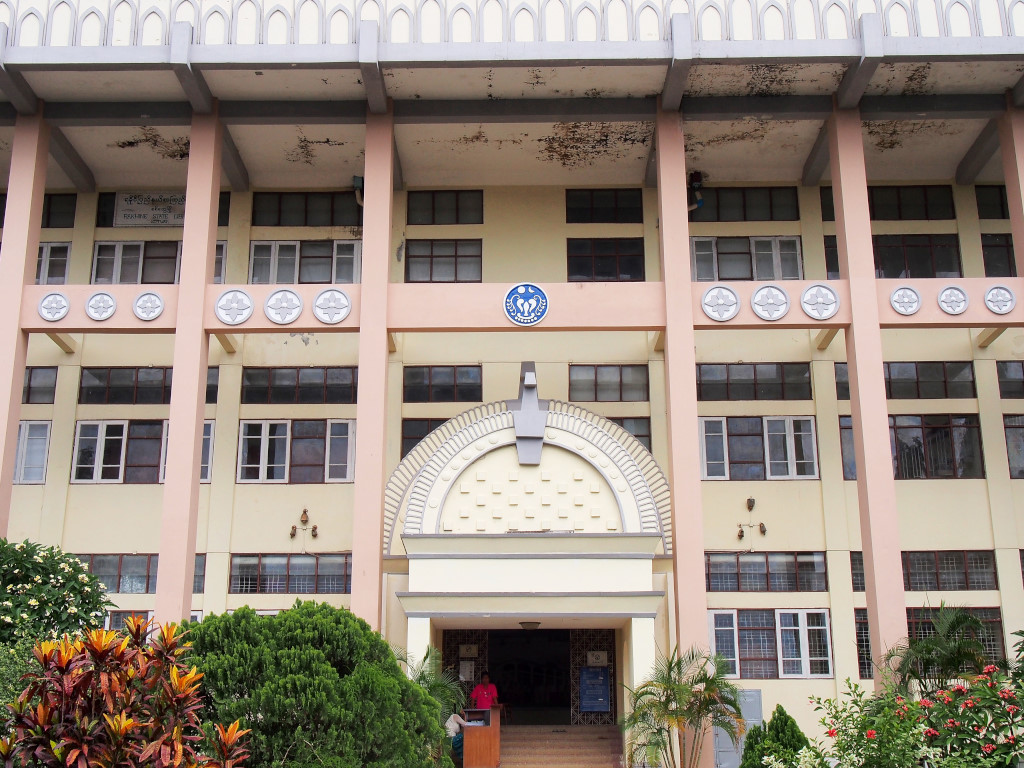
The Rohingya are not recognized by the state of Myanmar, being considered nothing more than illegal Bengali immigrants. And yet the same government recognizes innumerable other ethnicities in the country, not that the junta ruling Myanmar hasn’t engaged in equally if not more brutal conflicts with other ethnic groups.
The government will not even currently recognize the label Rohingya, despite having done so in the past. In fact, the term was used as early as in a publication in 1799 by Francis Buchanan-Hamilton on Burma. Moreover, the Rohingya population has been denied citizenship under the 1982 Myanmar nationality law.
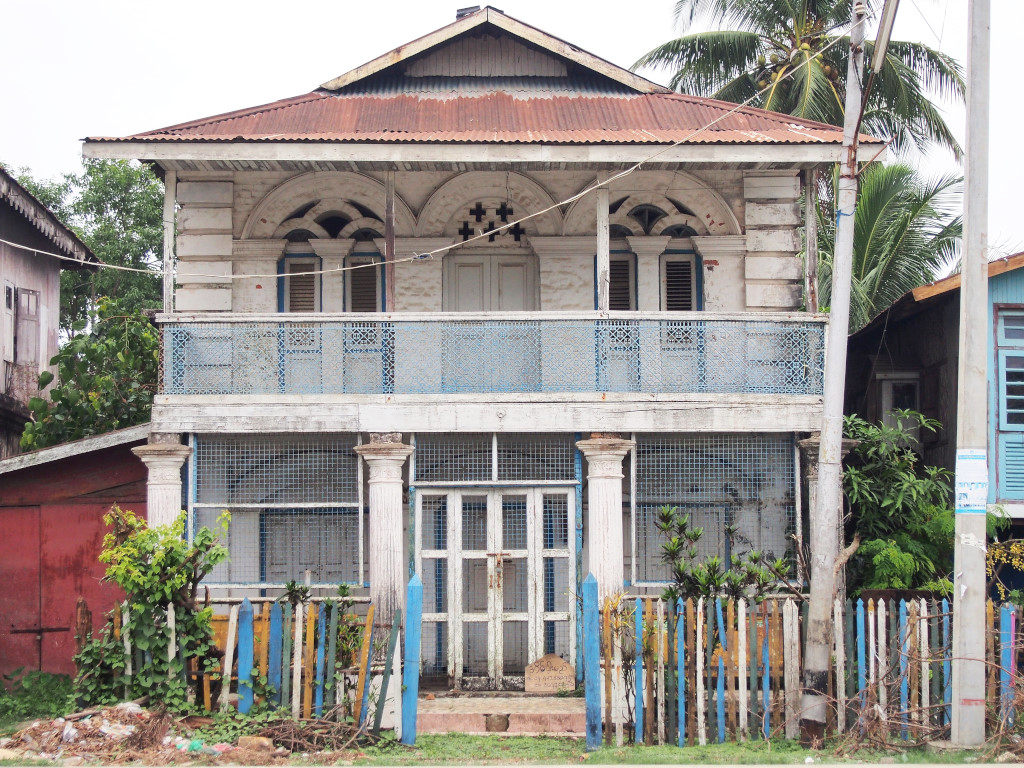
Some amount of the Rohingya could be considered Bengali of recent origin, although it would be exceedingly difficult to determine what the exact provenance of these people are, given their complex history, and the anarchic governance the region has experienced over the better part of the last millennium.

The confusion and violence in the region has been increasingly escalating in the last few decades, involving a chronology of events far too complicated to recount. Aggression, violence and purges on both sides flare up, with international observers wringing their hands in despair.
More Rohingya are persecuted, flooding into refugee camps or migrating abroad in the most pathetic circumstances, the Burmese military launching ongoing attacks, and the government continuing to express complete indifference.
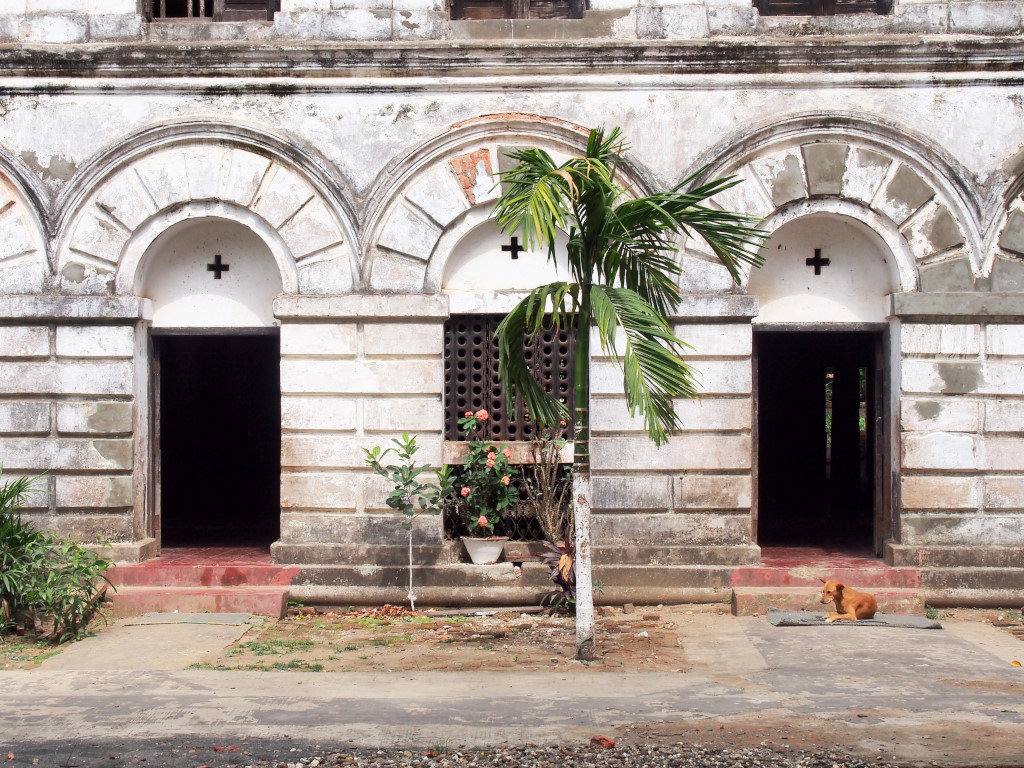
Aung San Suu Kyi, elected to State Councillor and once perceived as paragon of liberation, has within a short time frame plummeted to an image of pariah in the eyes of the international progressive community, given her rectitude if not outright indifference in the face of the Rohingya crisis.
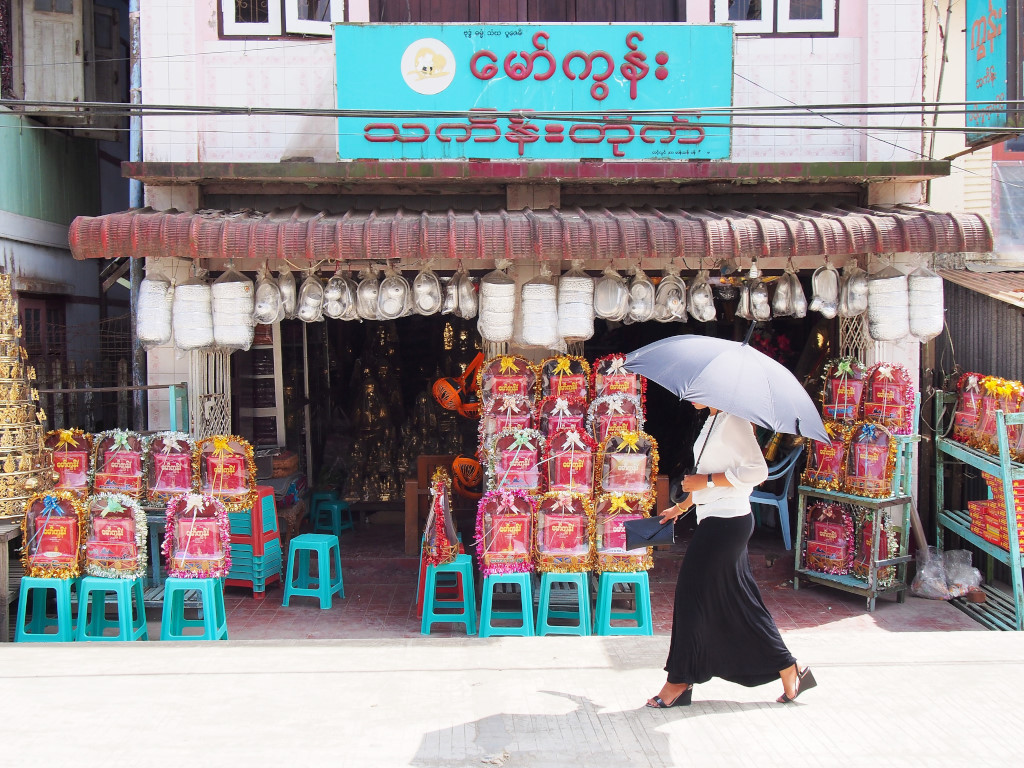
The motives for the Myanmar military and Suu Kyi are opaque, although some ideas come to mind.
The Burmese are not remotely sympathetic to Indians, given the extent to which the country was allowed to become flooded by Indians by the British during the Raj. Buddhist societies are nowhere nearly as open-minded as people in the west may think, particularly given the militaristic nature in which their countries are run, in fact, have always been run.
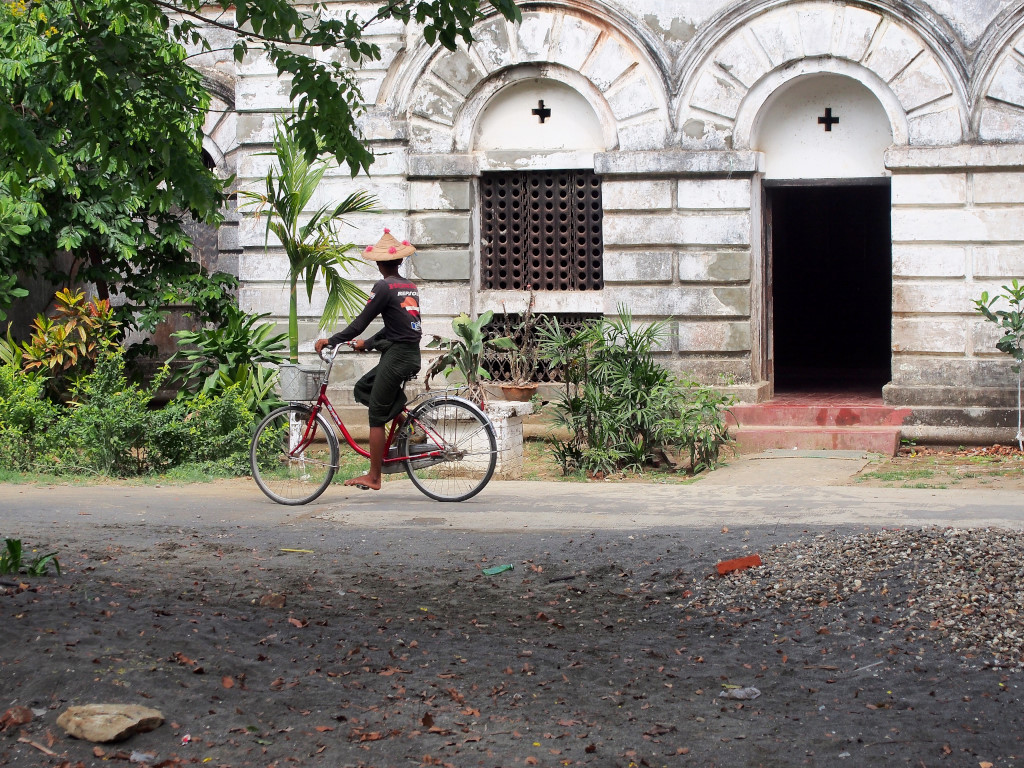
Ultra-nationalist Buddhist monks have formed a powerful movement against the Rohingya, not surprising, given the sway to which religion holds over this devoutly Buddhist nation. The Myanmar government has also accused the Rohingya militant groups of being fronts for radical Islamic groups, and some degree of infiltration may be in evidence.
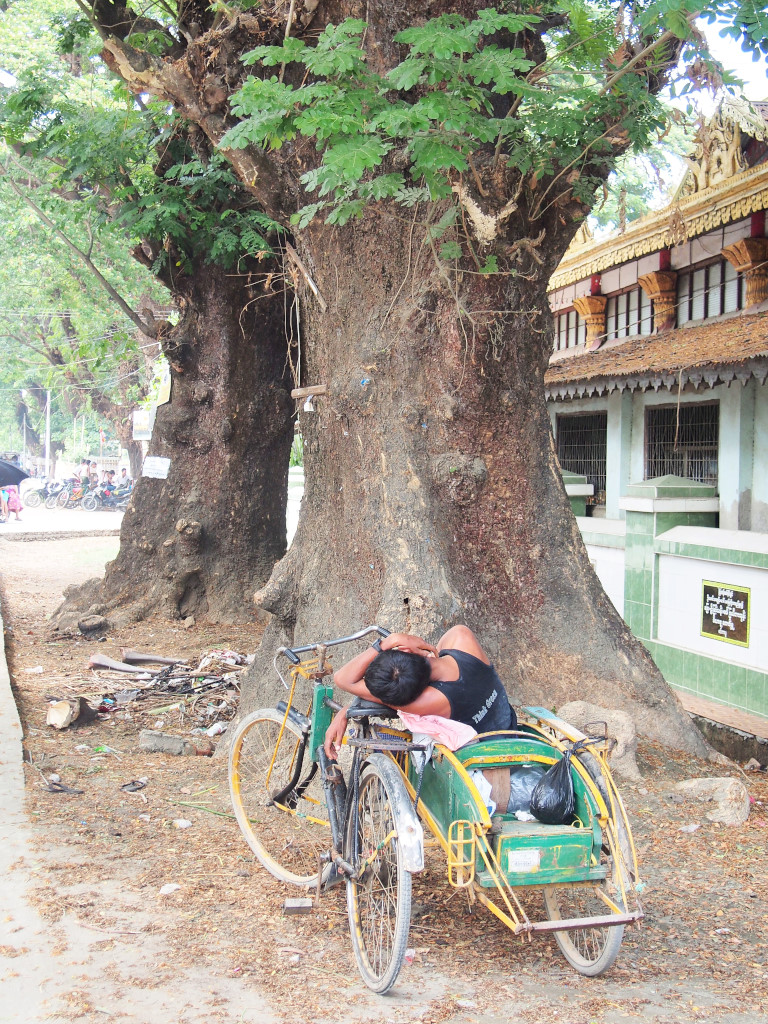
Then some proportion of the Rohingya may well in fact recent Bengali immigrants, illegal or not, given that the only country worse to live in than Burma would be Bangladesh, never mind with the region’s vast overpopulation and lack of available arable land. The Bengali population of Rakhine state seems to be flowing back and forth to the Chittagong region of eastern Bangladesh for the better amount of the last millennium.
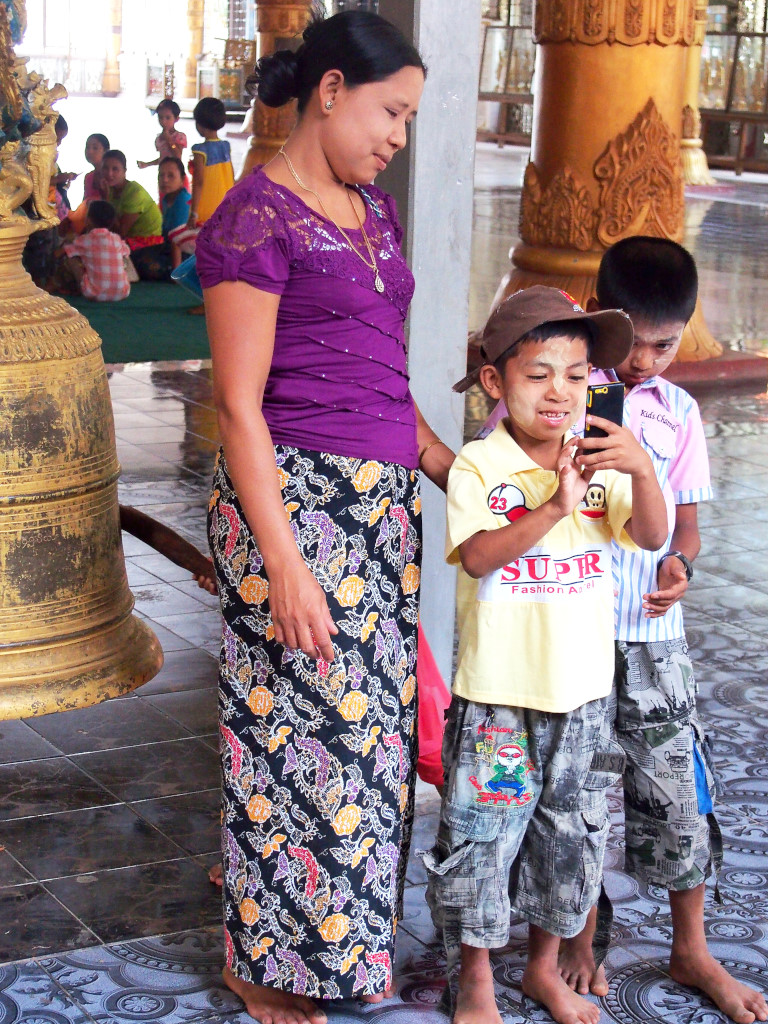
Aung San Suu Kyi would not want to risk her fragile political standing in Myanmar. While wildly popular with the Burmese populace and ostensibly other ethnicities, she would be wise to proceed carefully in the face of the military that still effectively runs the country. And yet she is also a child of the military, given that her renowned father formed the Burmese military following independence.
While she had been a beacon of hope for the local and international communities, she is apparently nowhere nearly as politically progressive as people may have hoped. Yet for the Burmese, witnessing the vast economic surge forward in the Yangon region as well as her demure stance in the face of the oppression of the Muslim people in the country, she may be exactly the kind of leader they want.
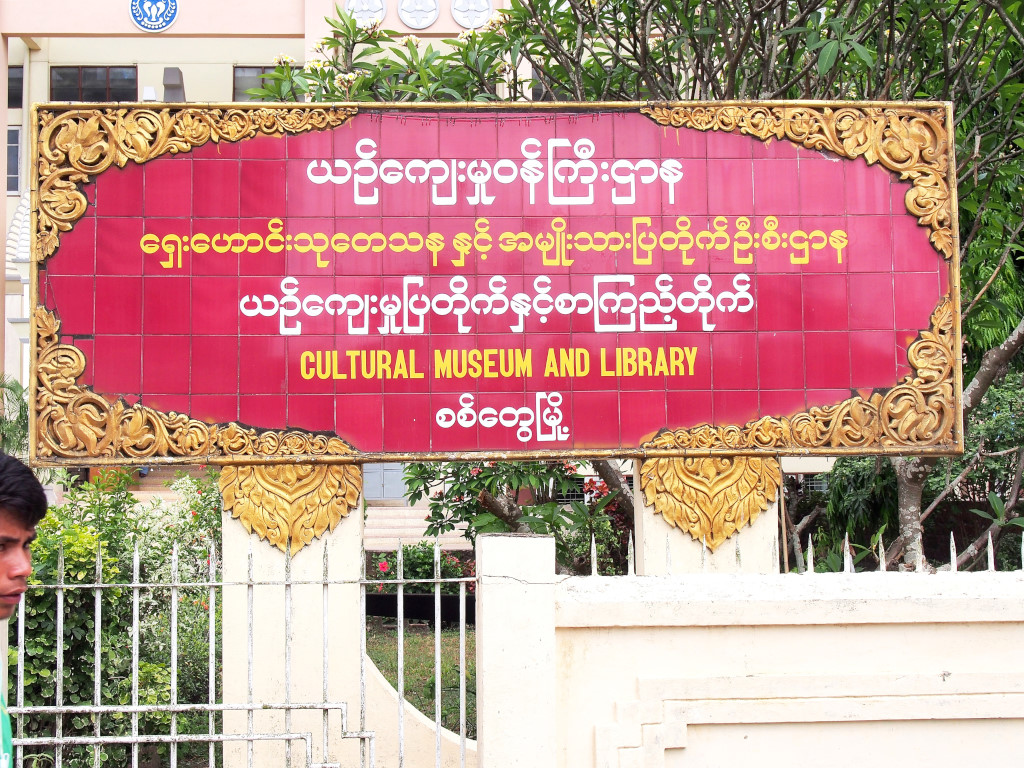
A walking tour around the town follows, beginning with a passage past the museum, which adds a note of elementary ostentation to the town, what with its soaring multiple stories, pastel edifice, and pillared exoskeleton. The chaotic assortment of shrubbery in front of the structure is of questionable value, never mind the mythical golden dragons on pillars flanking the entranceway.
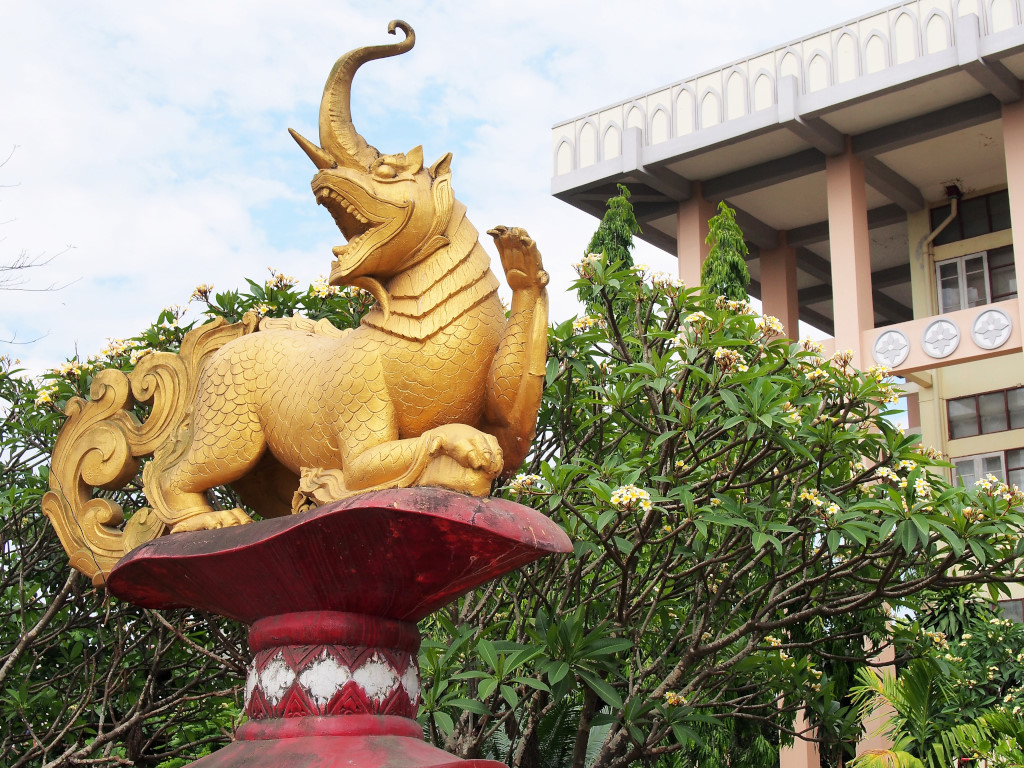
The mouldering streets are hardly blighted by much traffic, and whatever vehicles that may be present are rudimentary at best. Bicycles offer a common mode of transport to locals, trishaw operators waiting patiently on the possibility of clientele at strategic spots.
Vignettes of urban life characteristic of Southeast Asia are ubiquitous, such as manicured women shielding themselves from the opaque sun by means of raised umbrellas.
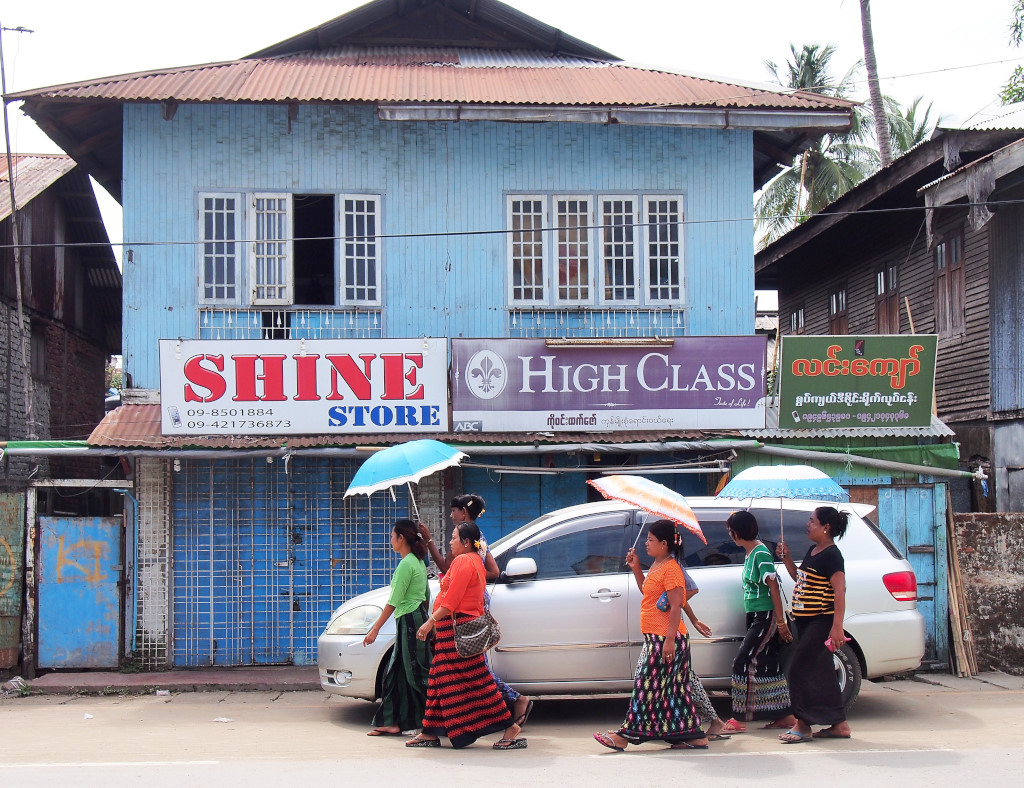
Buildings in Sittwe maybe shabby and decrepit, but no different from the bulk of the rest of the country. No bright colour schemes are in evidence, and even if there were, they have faded into the mists of time long ago. As everywhere else in the world, the only new buildings are banks.
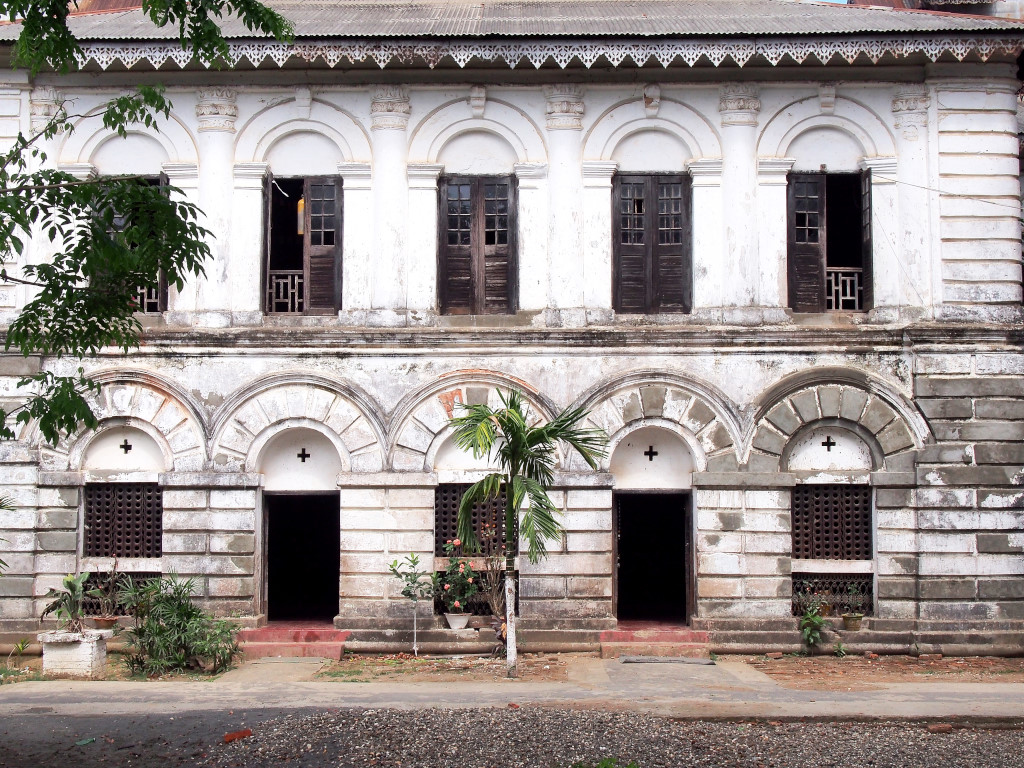
Some colonial-era buildings are visible, with their wide courtyards, arched portals, cornices, pediments, and decorative trim running the length of the gable roofs. Traditional houses are raised off the ground, with verandahs wrapping around the symmetrical structures, gabled roofs culminating in flashing with continuous repetitive patterns.
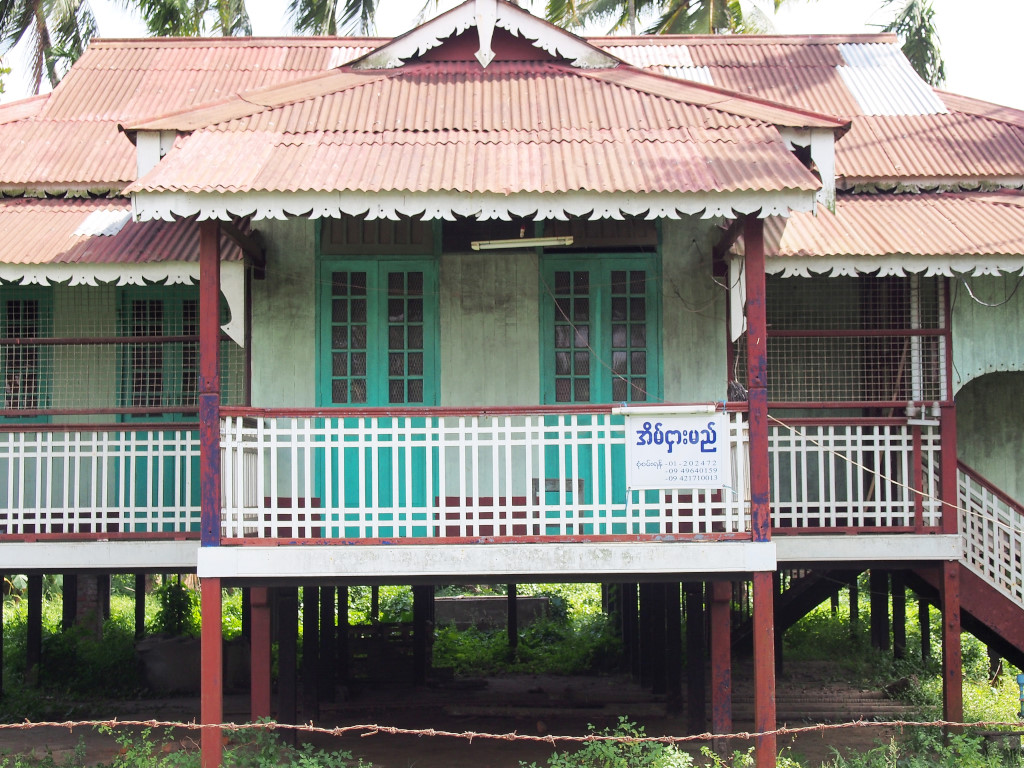
Some side alleys are flooded with rivers of composting trash flowing amidst the fecund vegetation. On one compact flatbed truck, a crowd surges upwards in tower formation, a paean to the creativity used to cram as many passengers as possible into vehicles. Bamboo cone hat-bearing cyclists elegantly meander by on old bicycles, the lungyi wrapped tightly around the legs and yet inexplicably not obstructing pedaling.
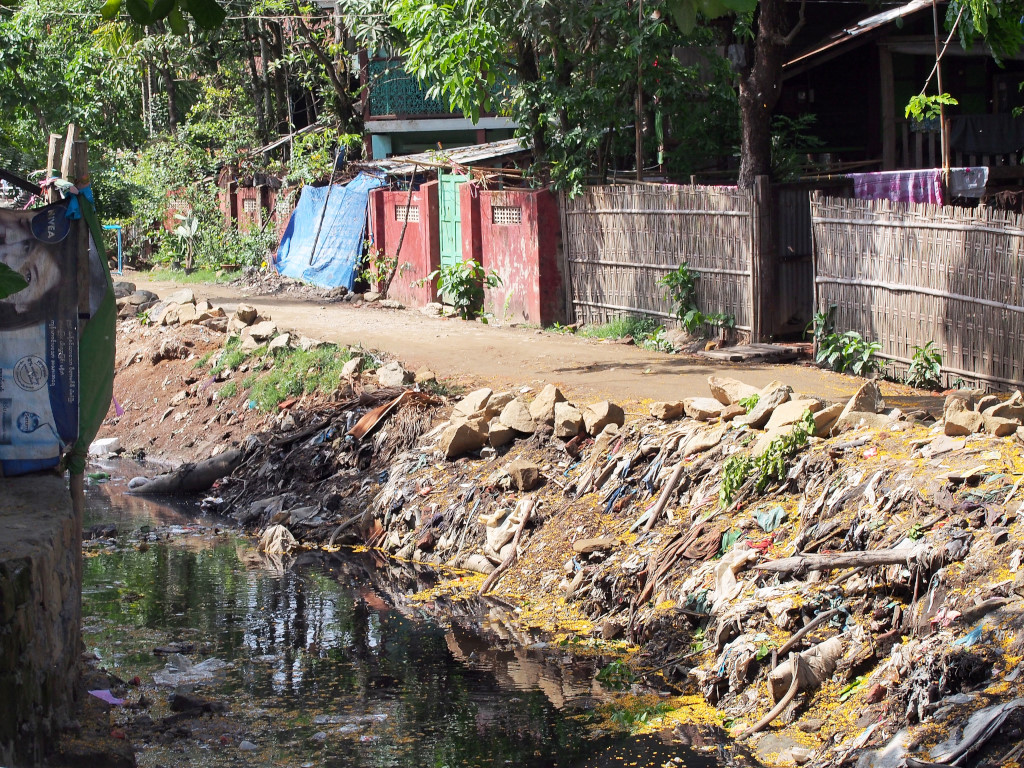
Sittwe also features some Buddhist temples, although they don’t seem to be a dominant theme in town, somehow surprising, given the importance of Sittwe as a bastion of Buddhism amidst a sea of apparently threatening Islam. Or maybe not – perhaps the town exists in an uneasy limbo between the different religious groups.

The one temple I come across seems to serve as somewhat of a recreation centre, considering that the structure offers shelter in the face of the blistering afternoon heat. Men lay sprawled across the tiled floor of the gold pillared hall, playing with their inevitable cell phones.
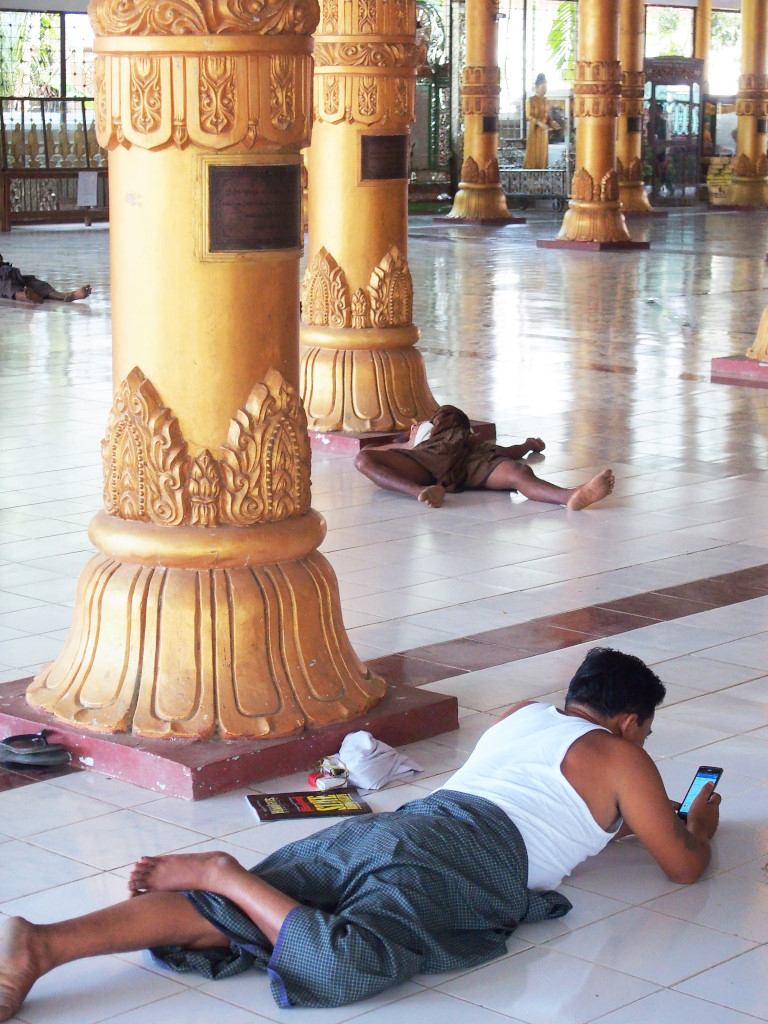
One child swathed in fuchsia attempts to knock a huge mallet against a golden bell. Selfies are unleashed, and yet more selfies, a concept of the times that has spread even to these remote climes.
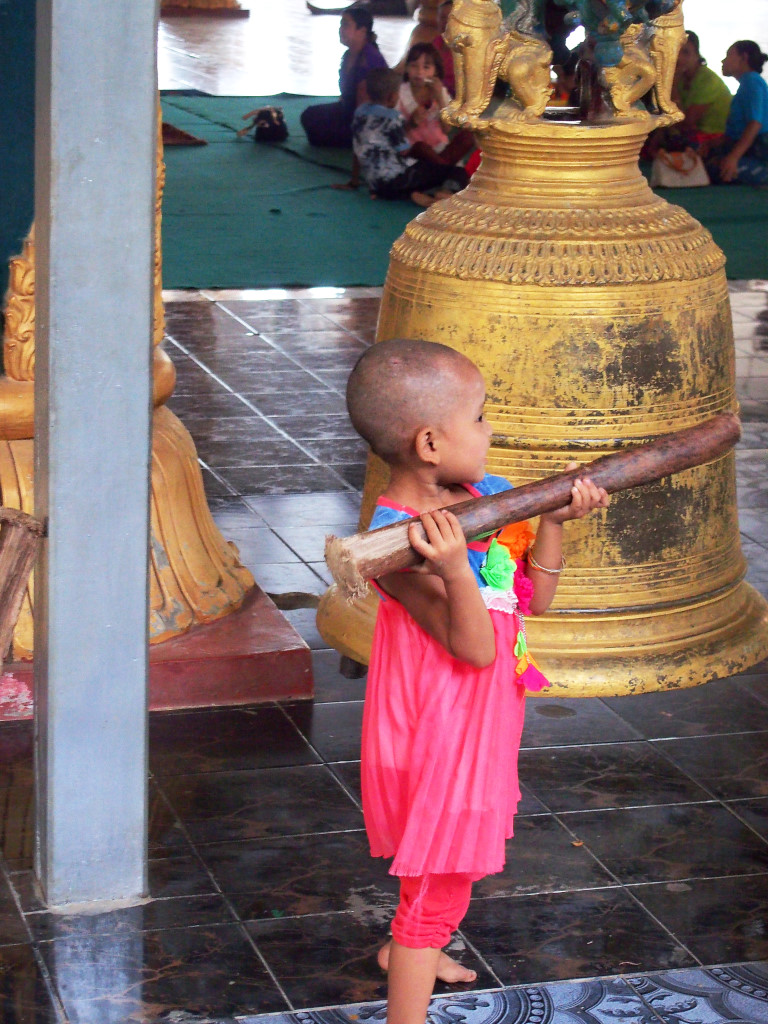
And yes, some in attendance even pray …
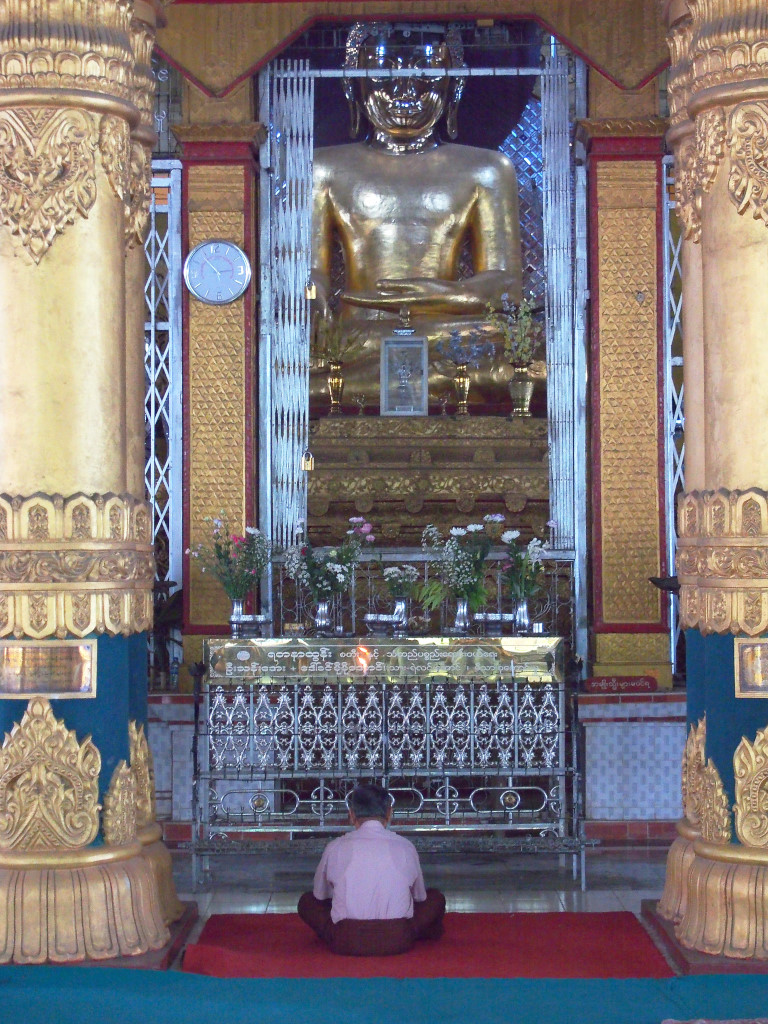
One shack further out from town acts as an impromptu fish drying facility, the bodies of the fish cut into innumerable fine strips, splayed gruesomely over a round frame, suspended from a line by the tail, the body culminating again at the head.
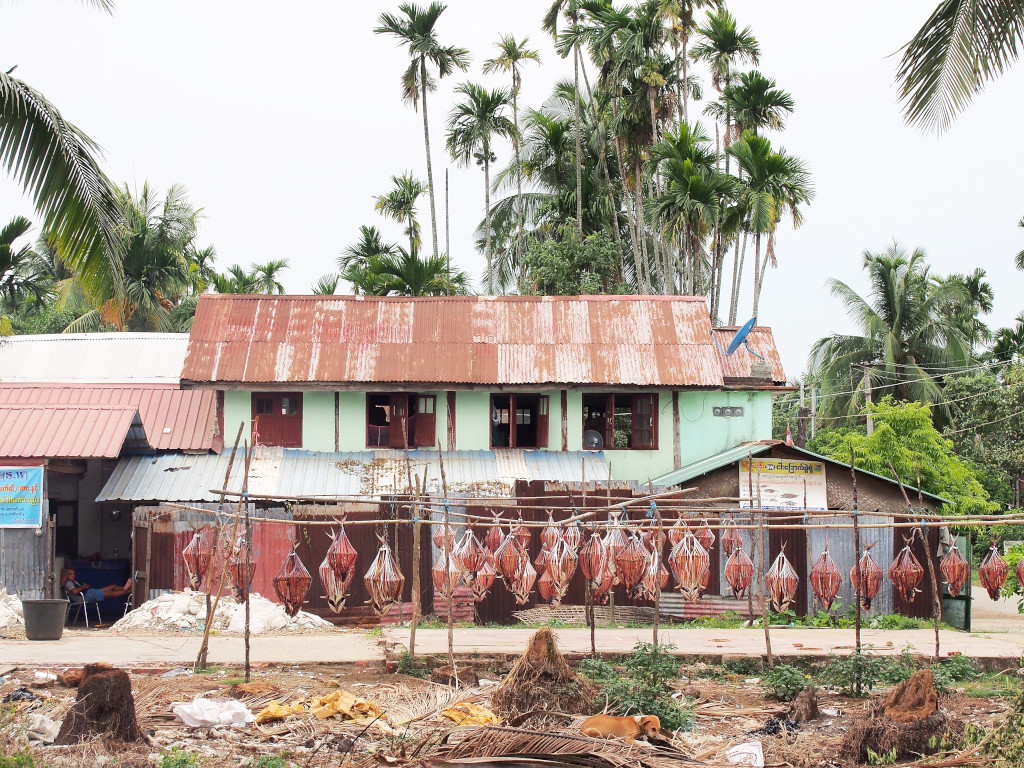
In the metallic light of the tropical rainy season, distant ships appear in the wide mouth of the Keladan river, which in turn mouths onto the vast Bay of Bengal.
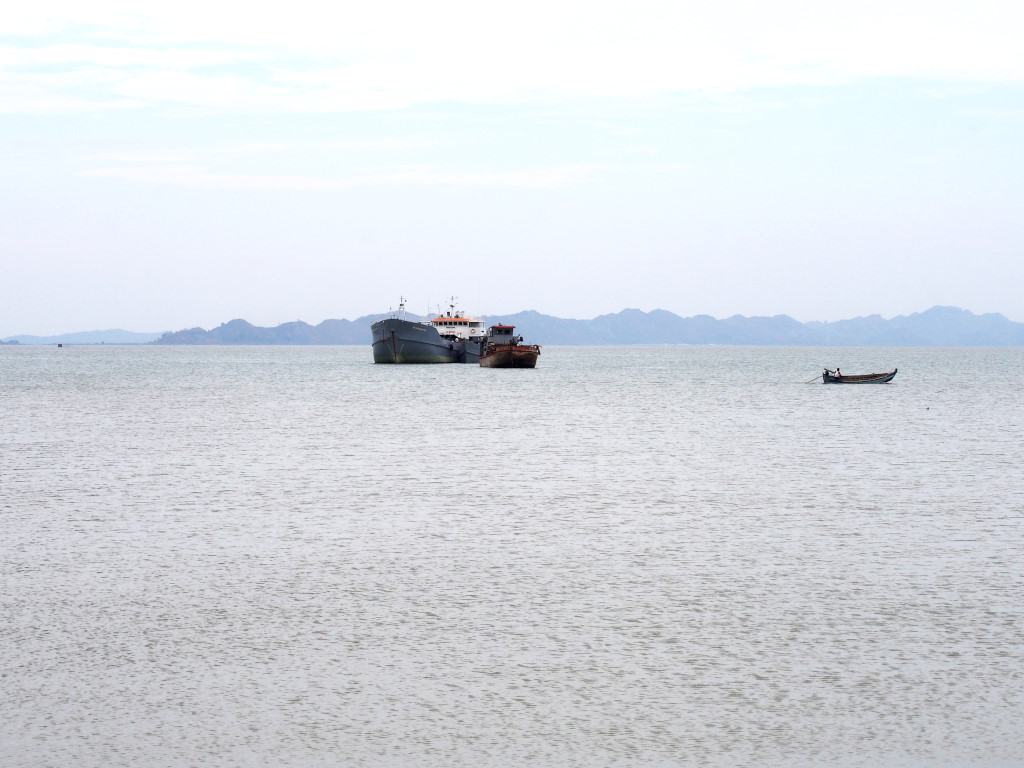
Ambling by decrepit bicycle further back towards the port, the array of crumbling traditional houses is breathtaking, although given the historic conflicts of the region, who knows what kind of sordid or tragic history they could have.
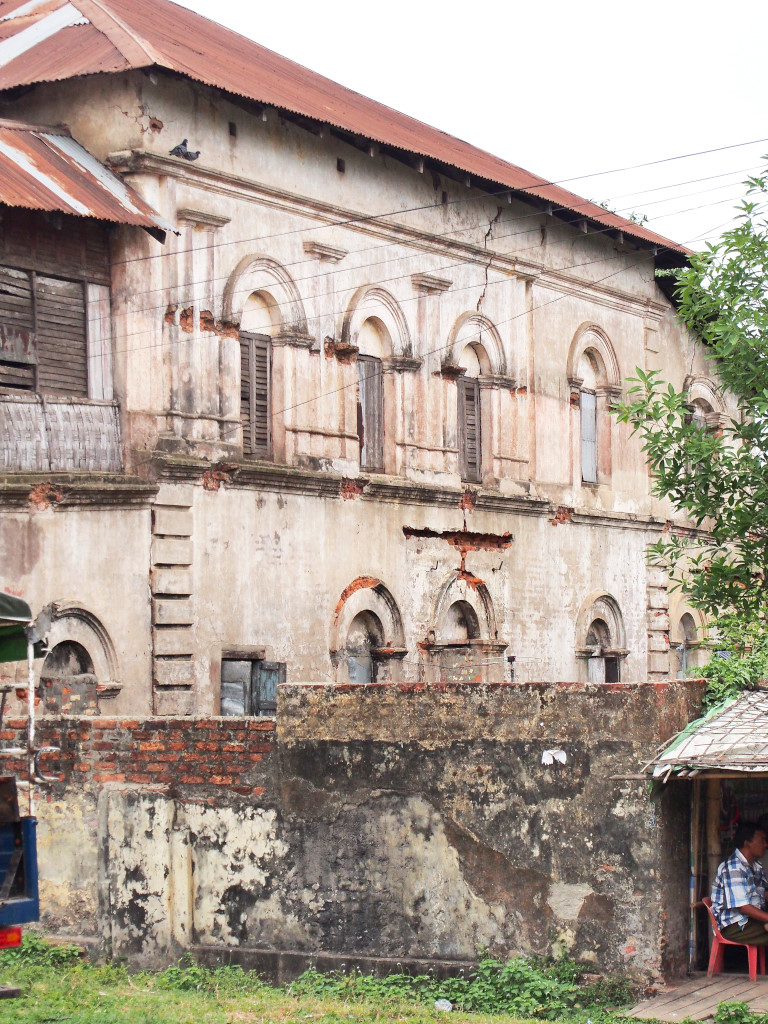
Despite the apparent poverty and decay, there is something fantastical, exotic and romantic about Sittwe. Much of the colonial and traditional architecture has its unique charm, and probably dates to the late Raj period, earlier on in the preceding century. It seems difficult to place the influences on the style of architecture, but it is different from the traditional housing that would be evident in other parts of Myanmar.
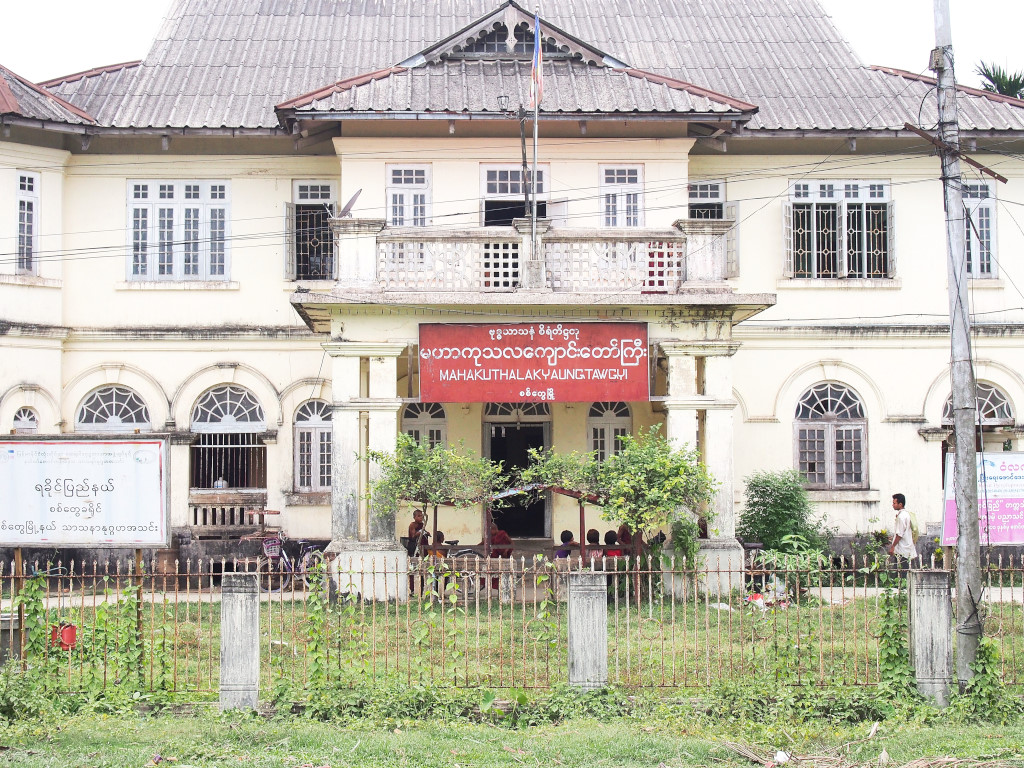
Back at the beach, panic erupts upon encountering jelly fish in the shallows. Paranoid at the sight of the pulsating creature, I immediately retreat to the shallows, although a man walking down the beach confirms that this jellyfish is nothing to be afraid of.
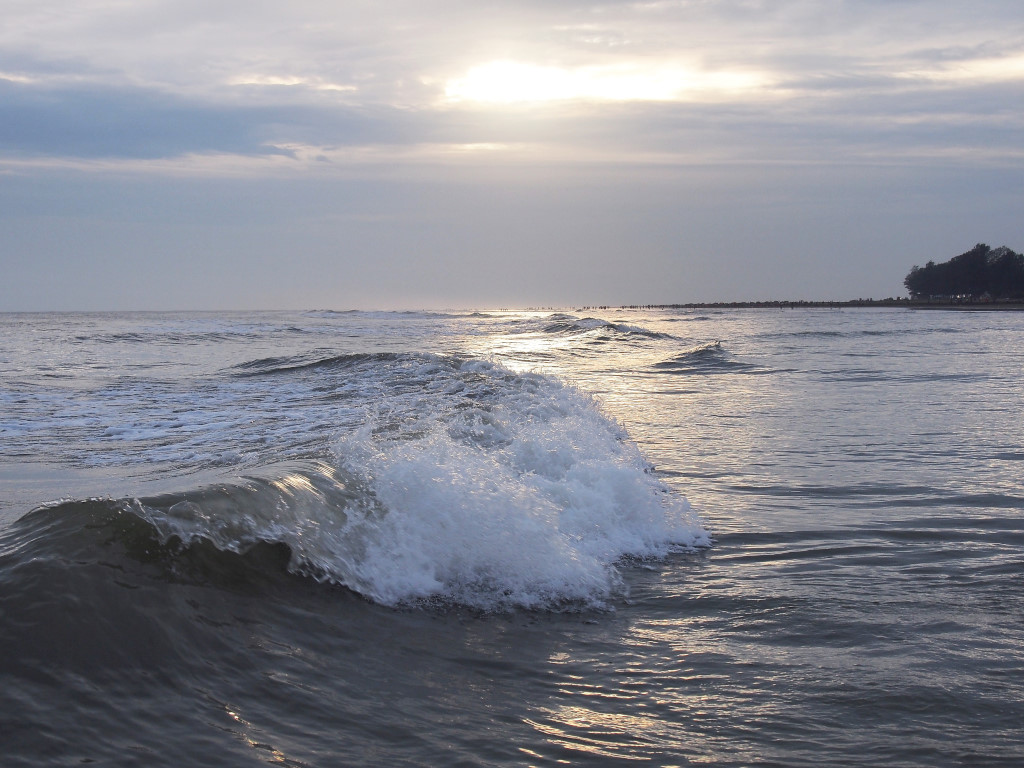
Of the several jellyfish lying on the beach, I throw one back into the water, but to no avail, as it doesn’t seem to come to life. Not that I am any kind of authority on resuscitating jellyfish.
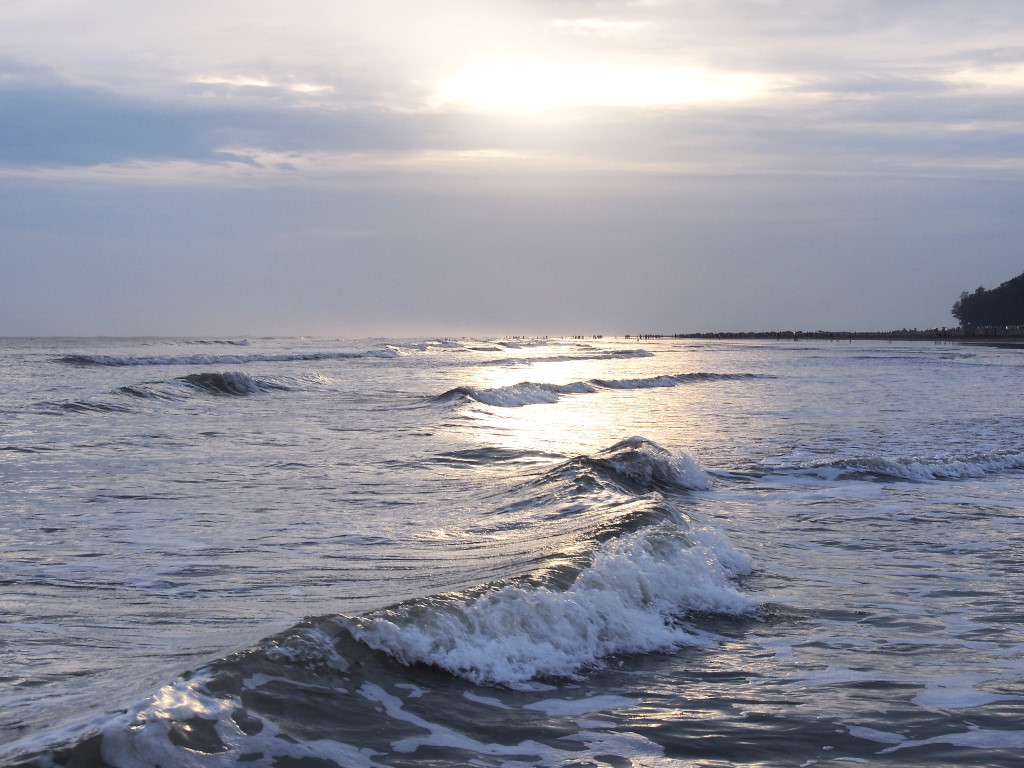
The sunset adds a gorgeous finale to the short but incredibly trip to the beach. There is nothing like the smell of salt air, the sight of the late afternoon light glimmering on the waves, and the sense of eternity that it brings.
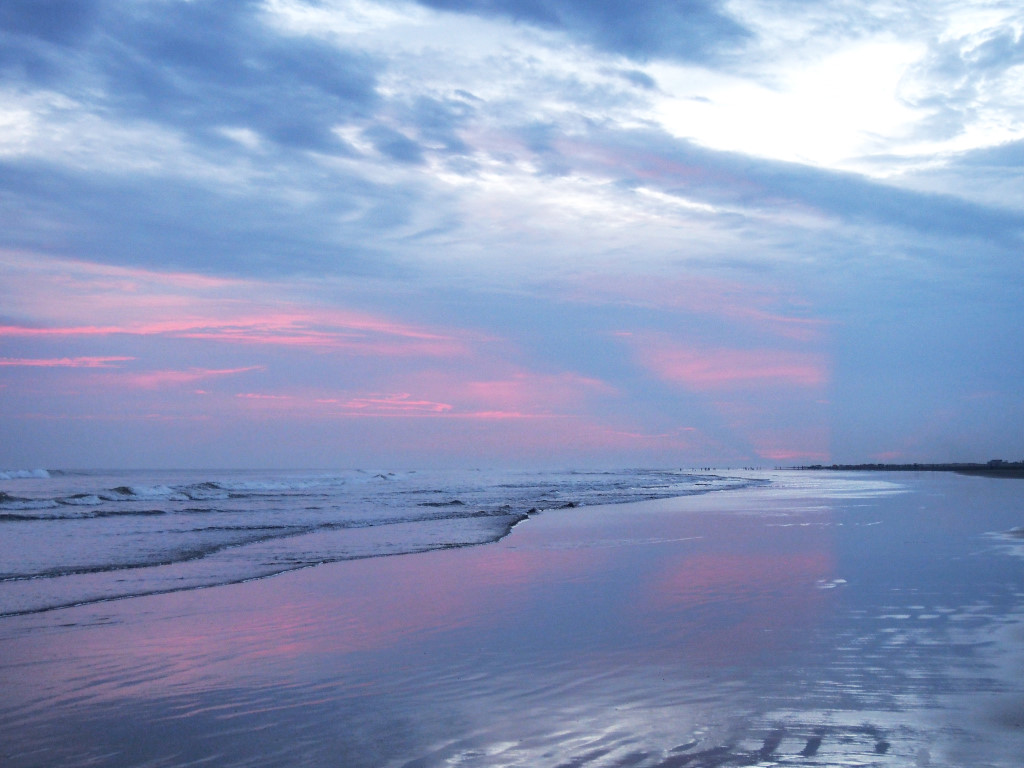
For all the hordes of young Burmese carousing back and forth along the road, very few make it to the beach, never mind into the water.
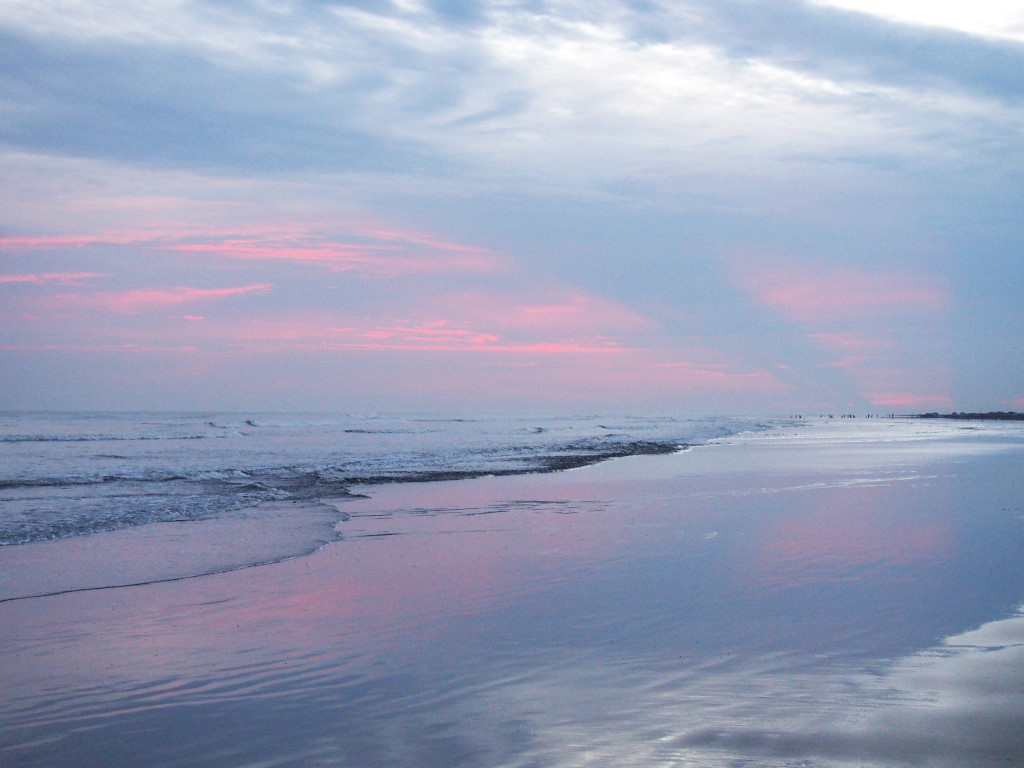
Back in town, I decide to try another restaurant in the side street leading from the hotel. The place charges only 1,000 kyat for the main dishes, unlike the much more expensive place yesterday, except that the chutney dishes are so hot, I have to stop eating, as the heat has killed my appetite.

